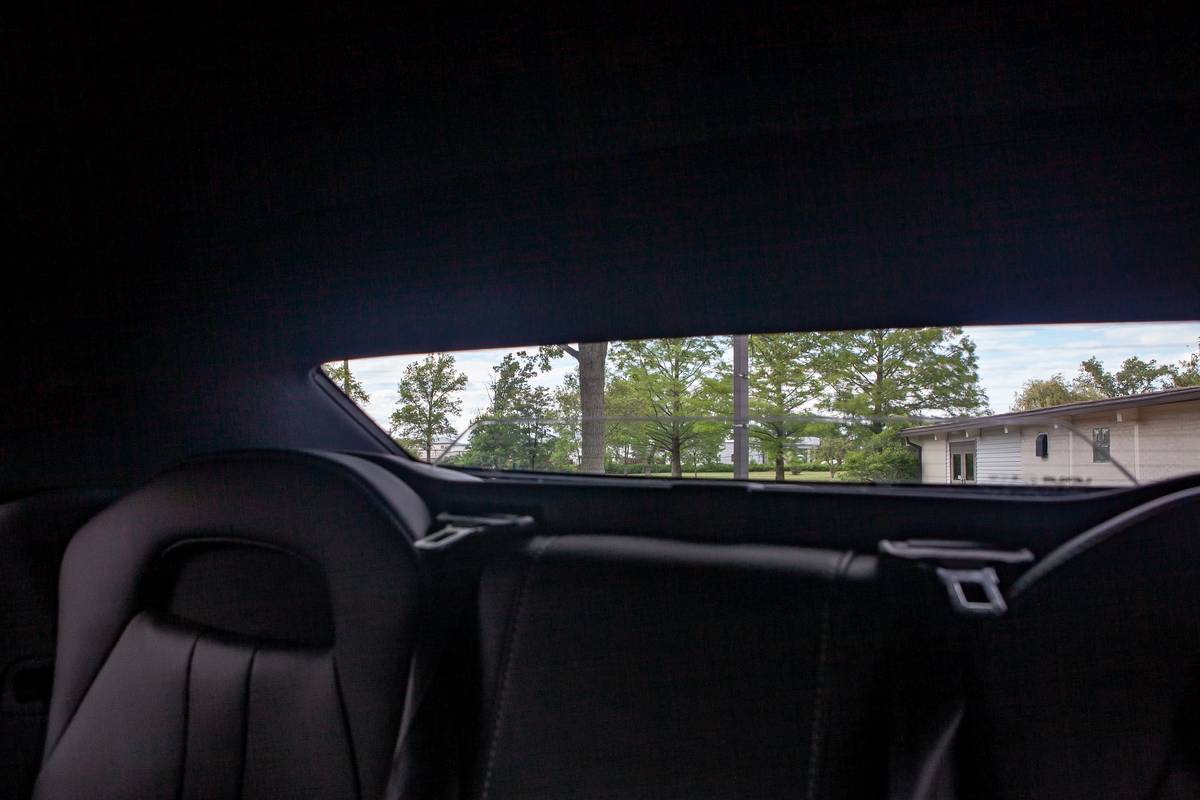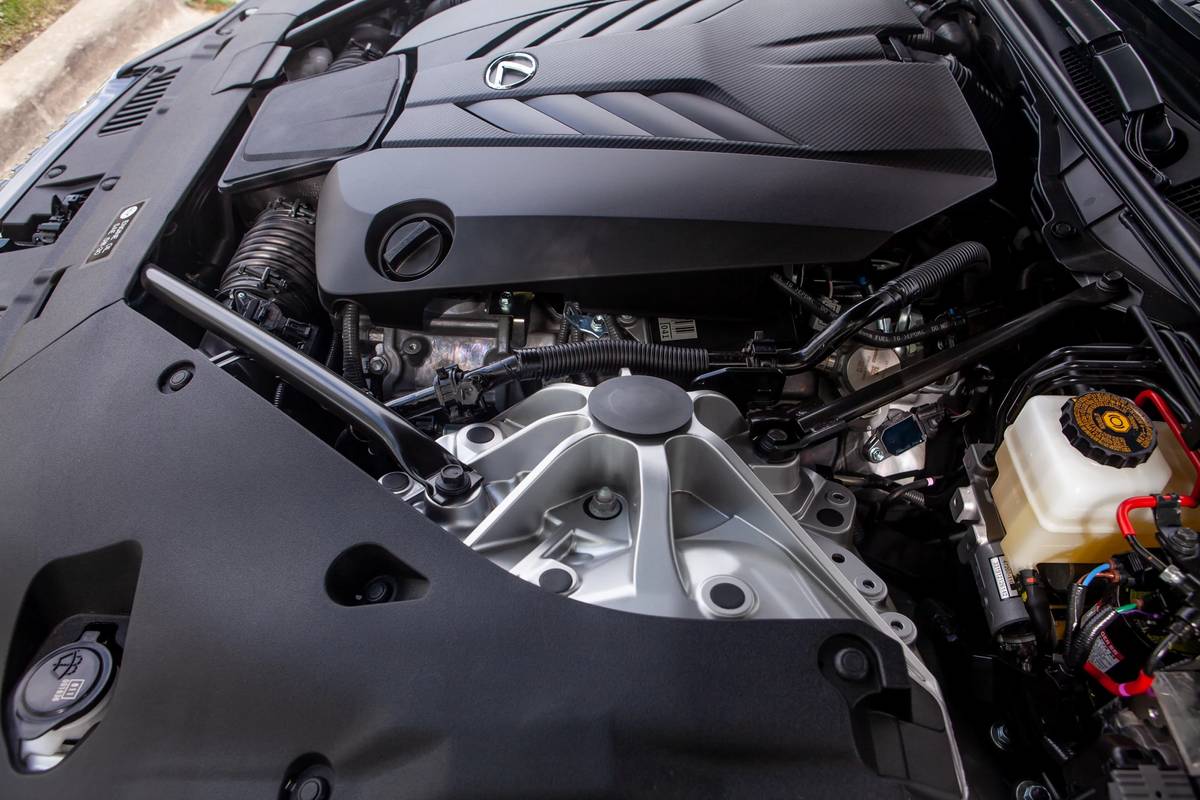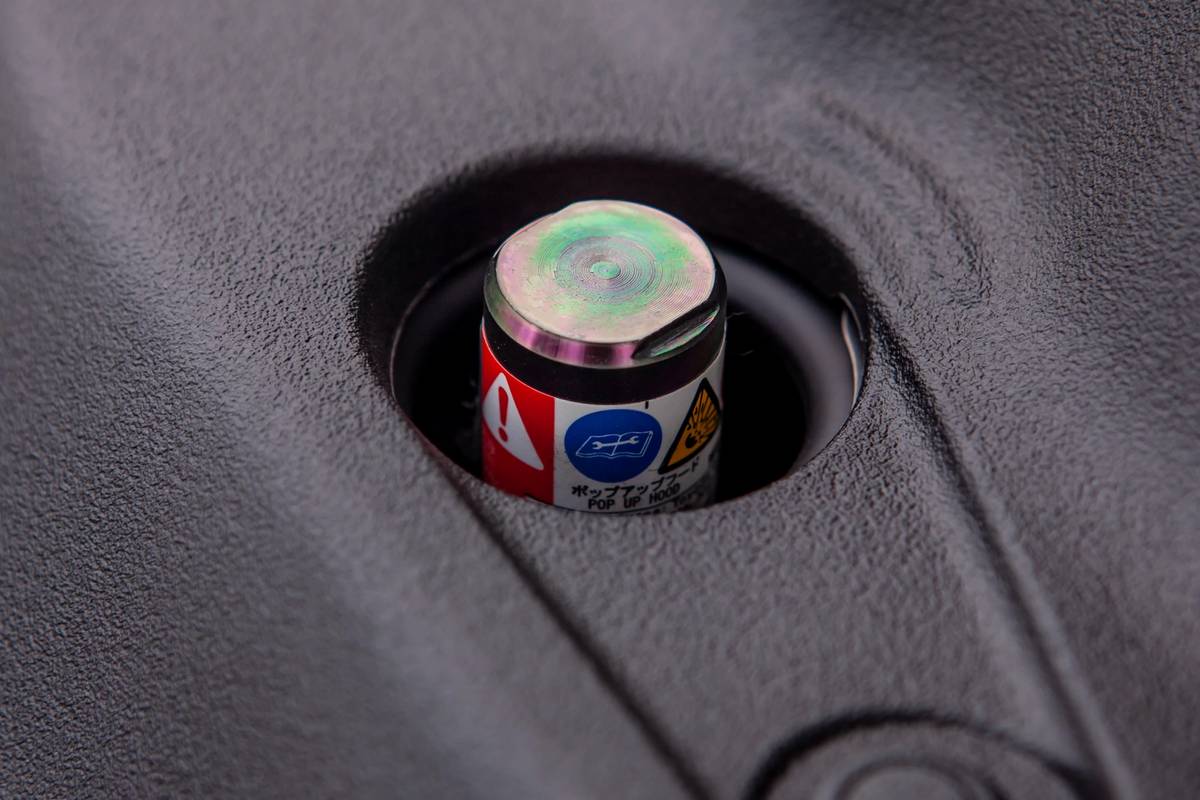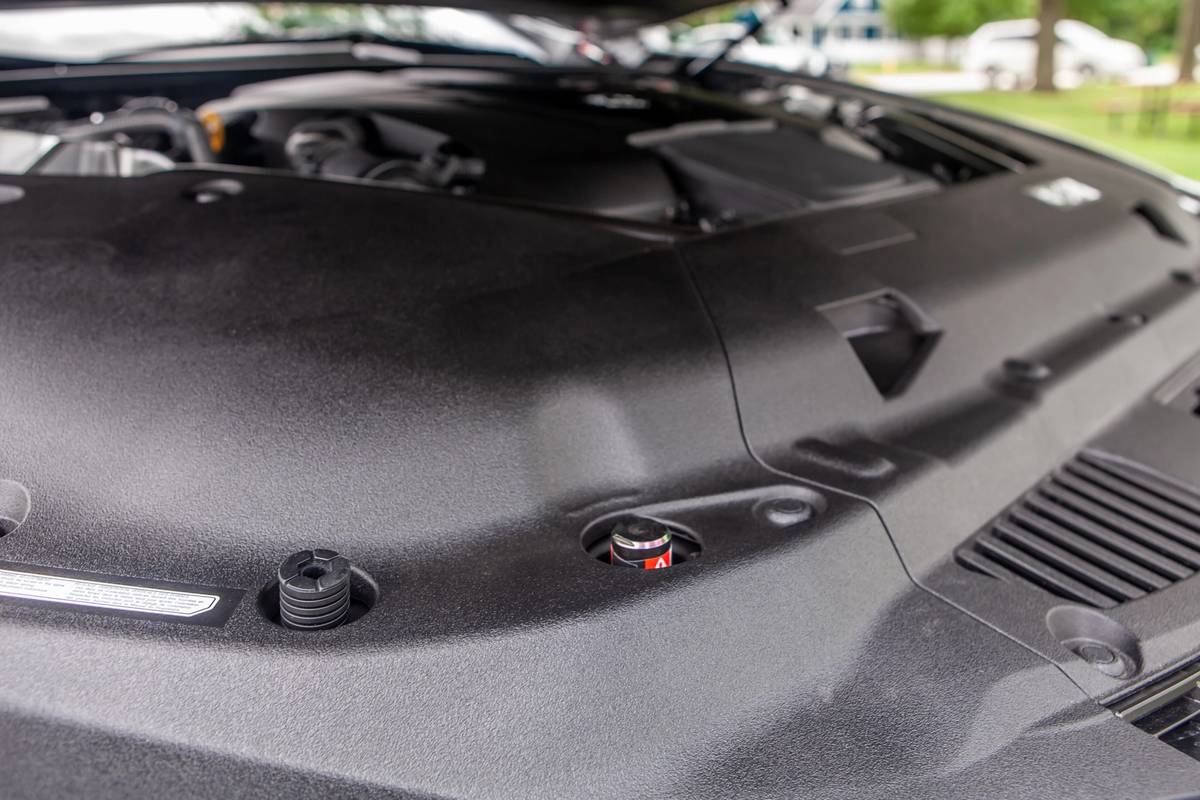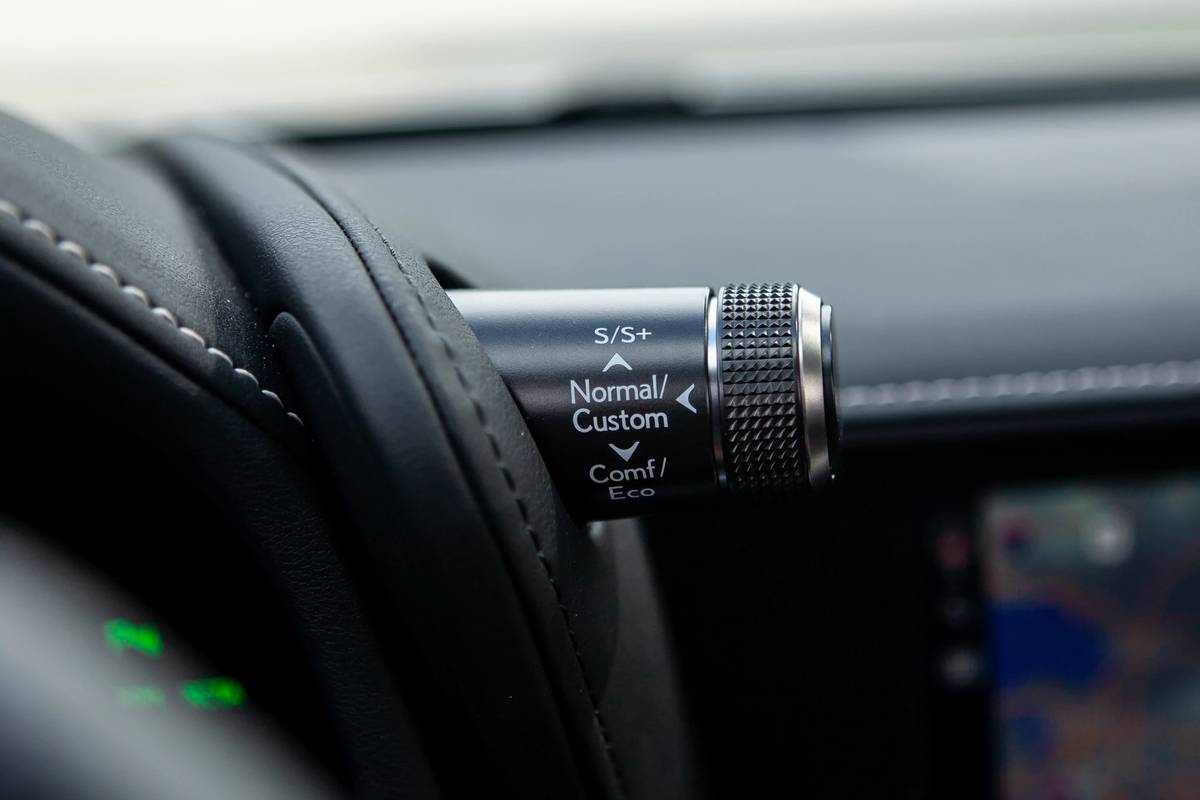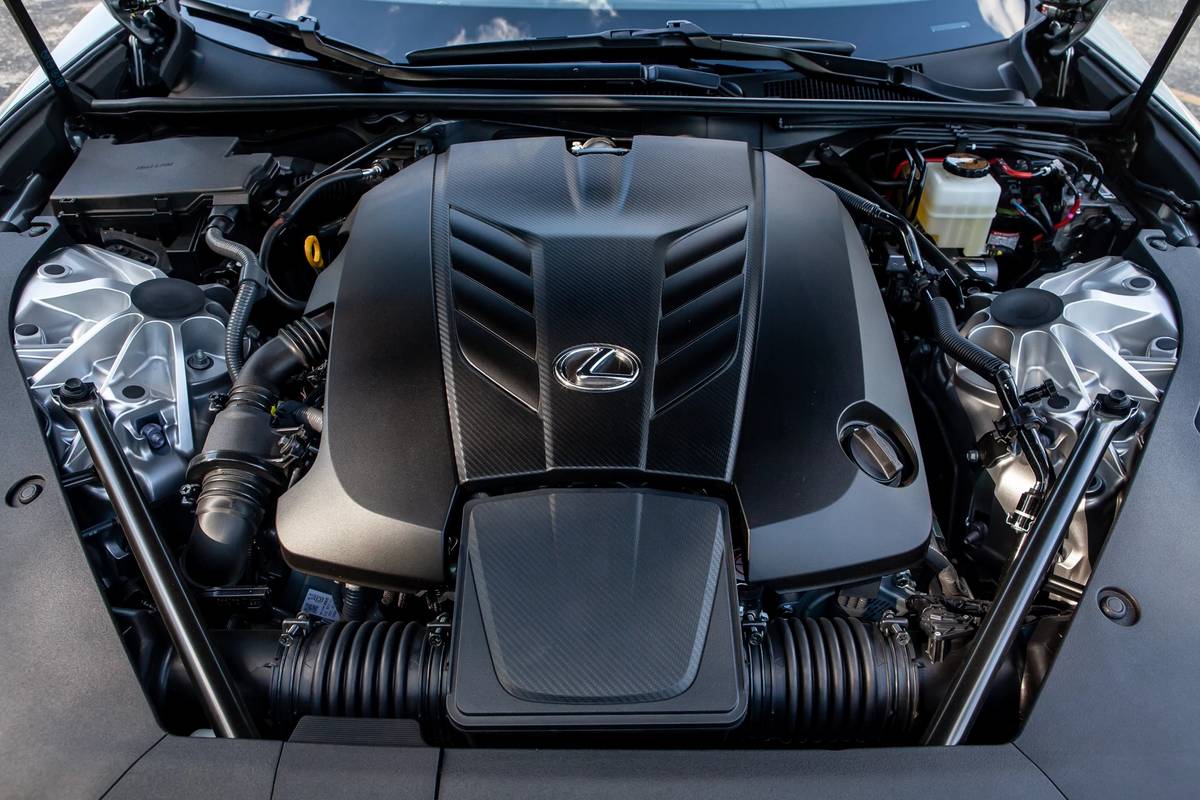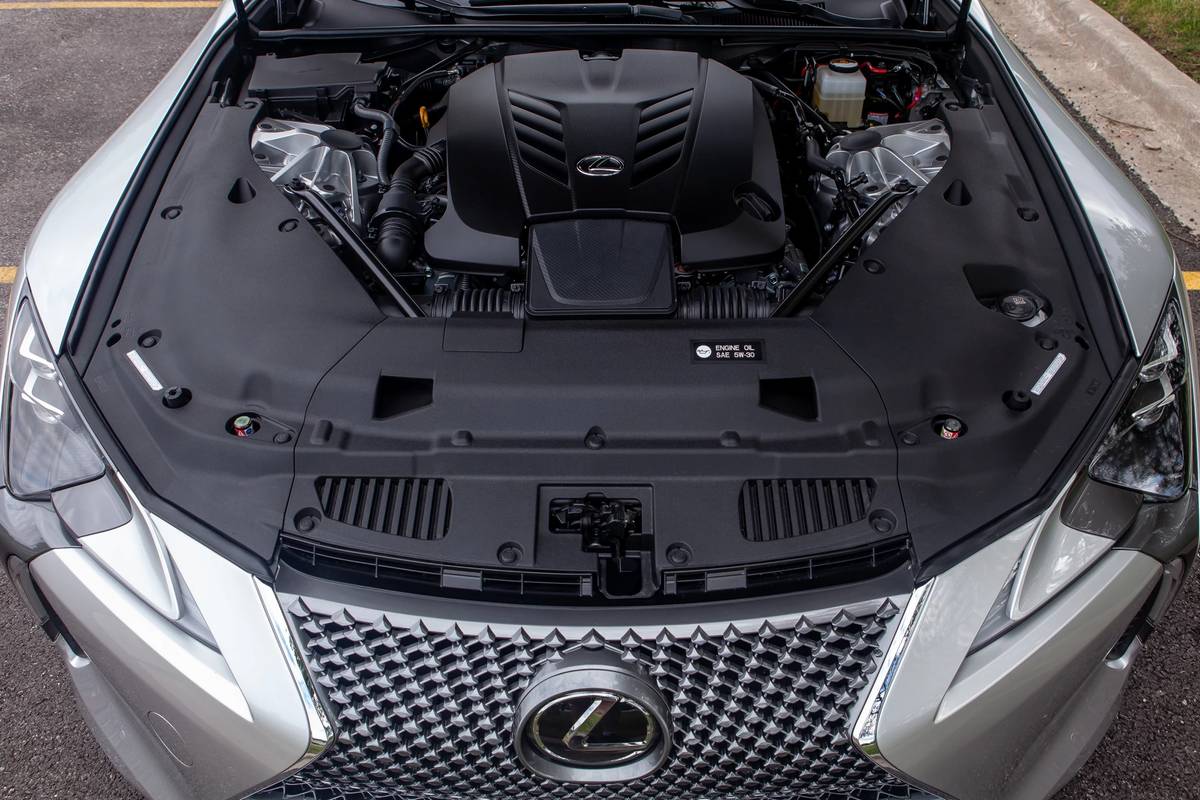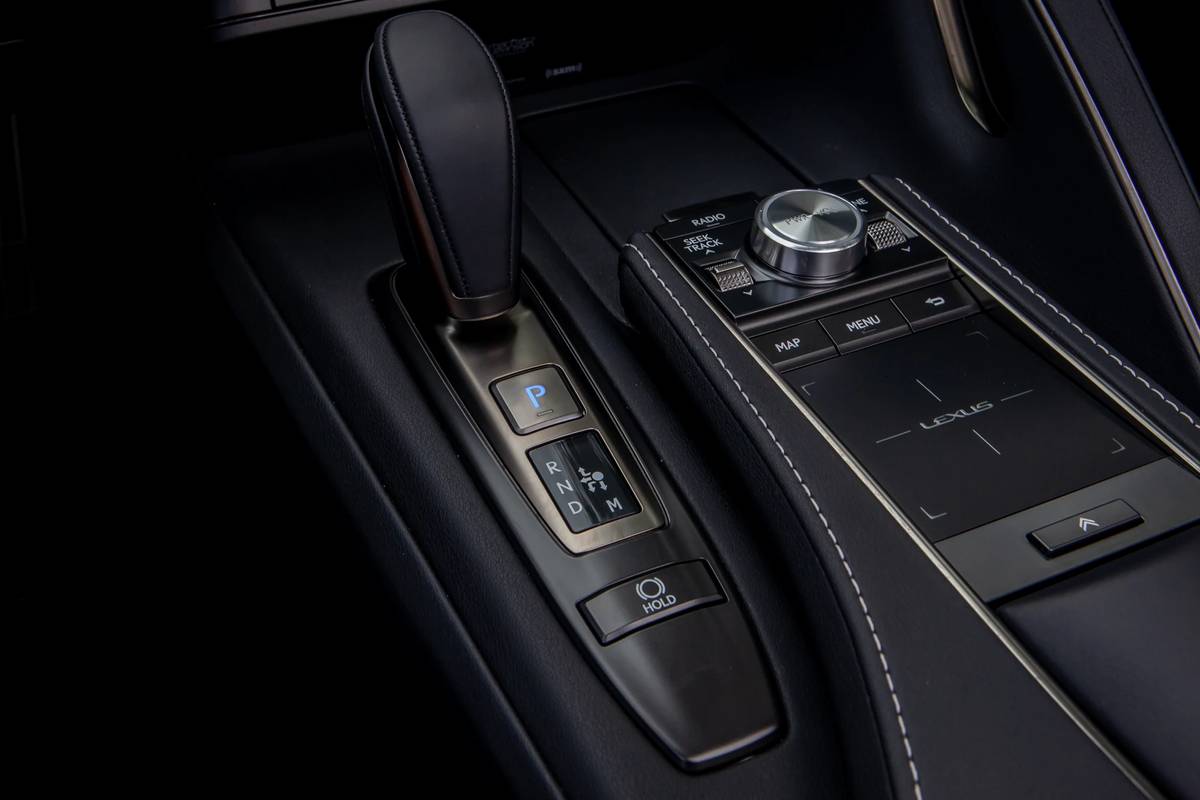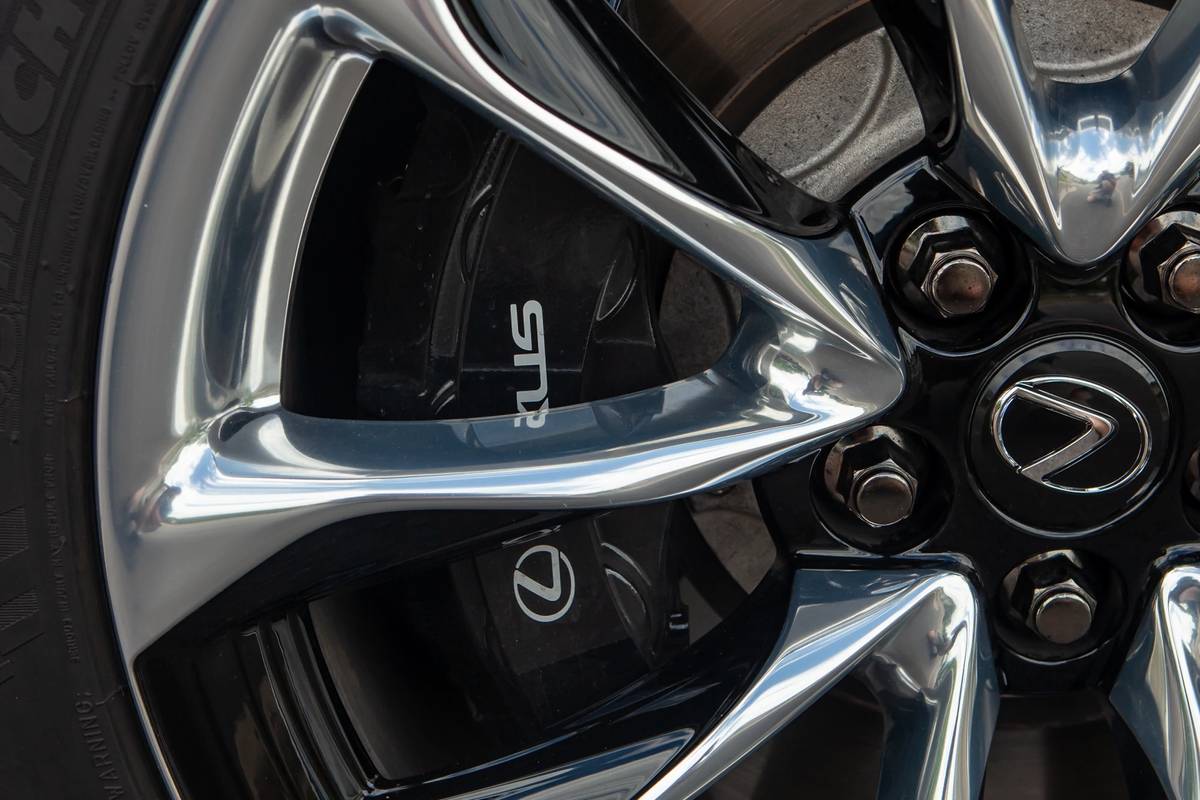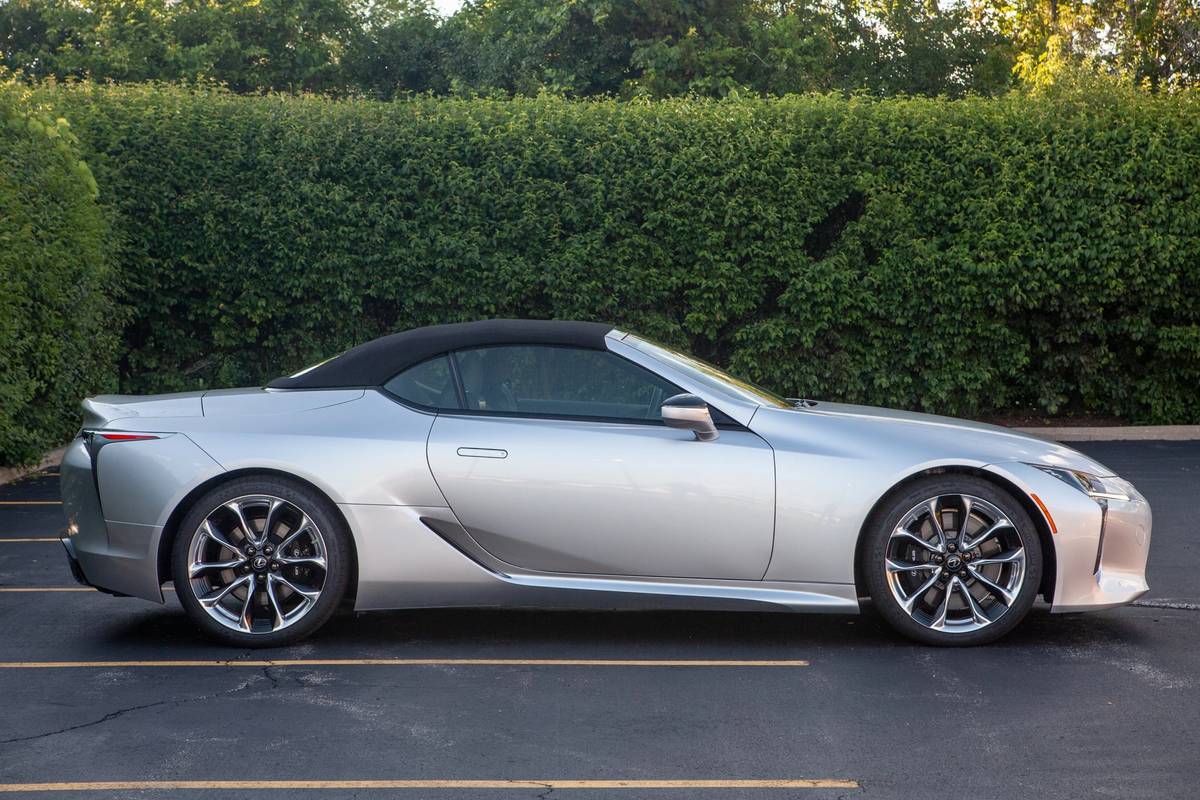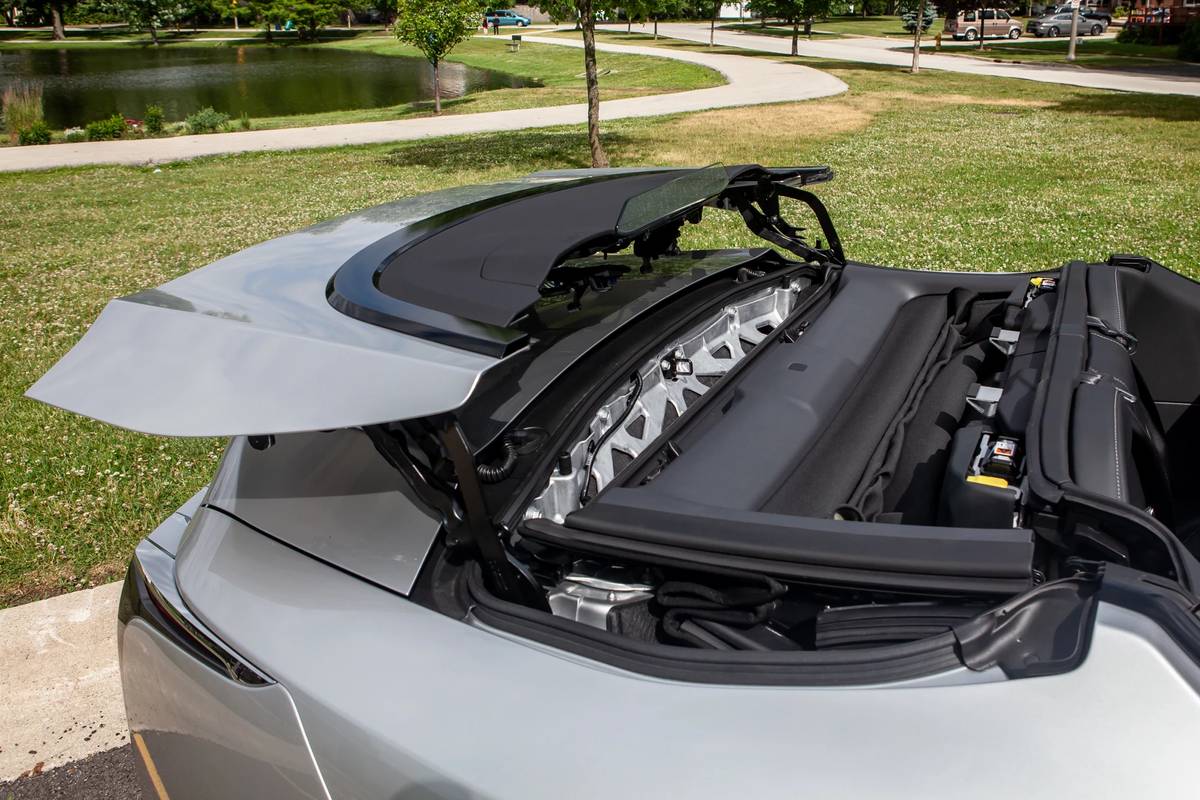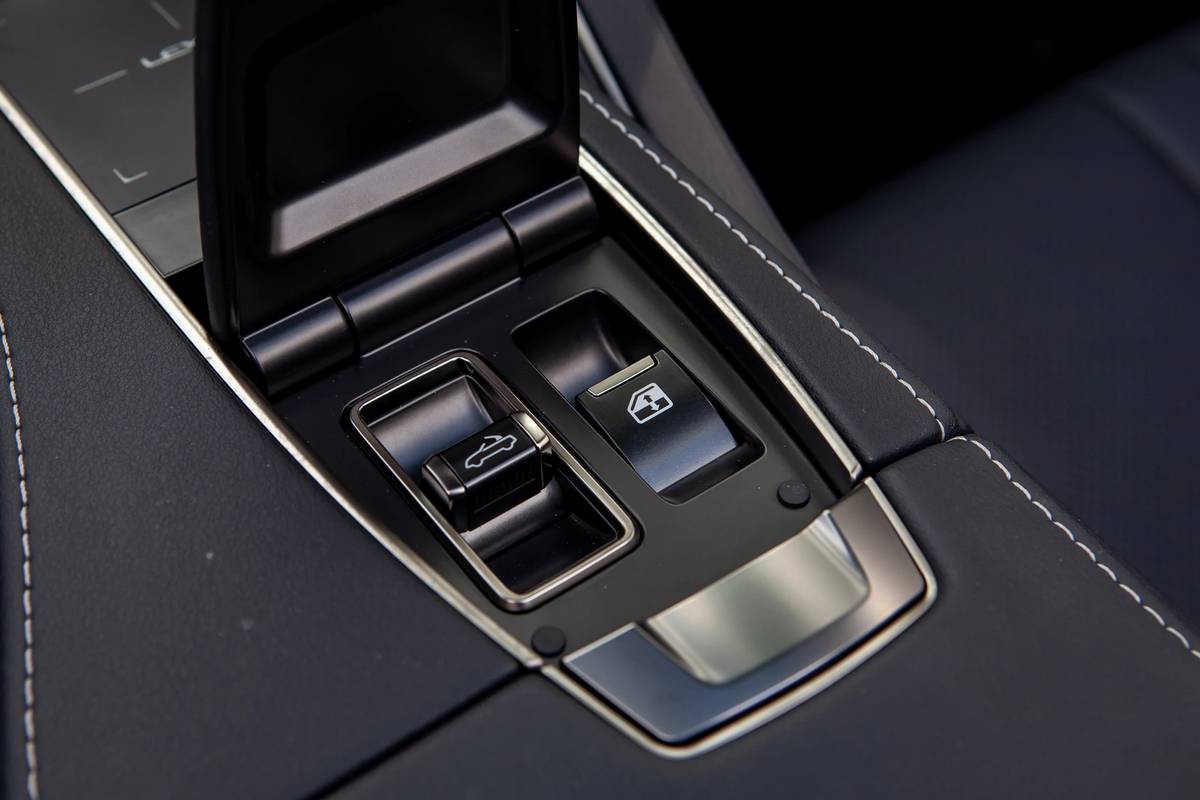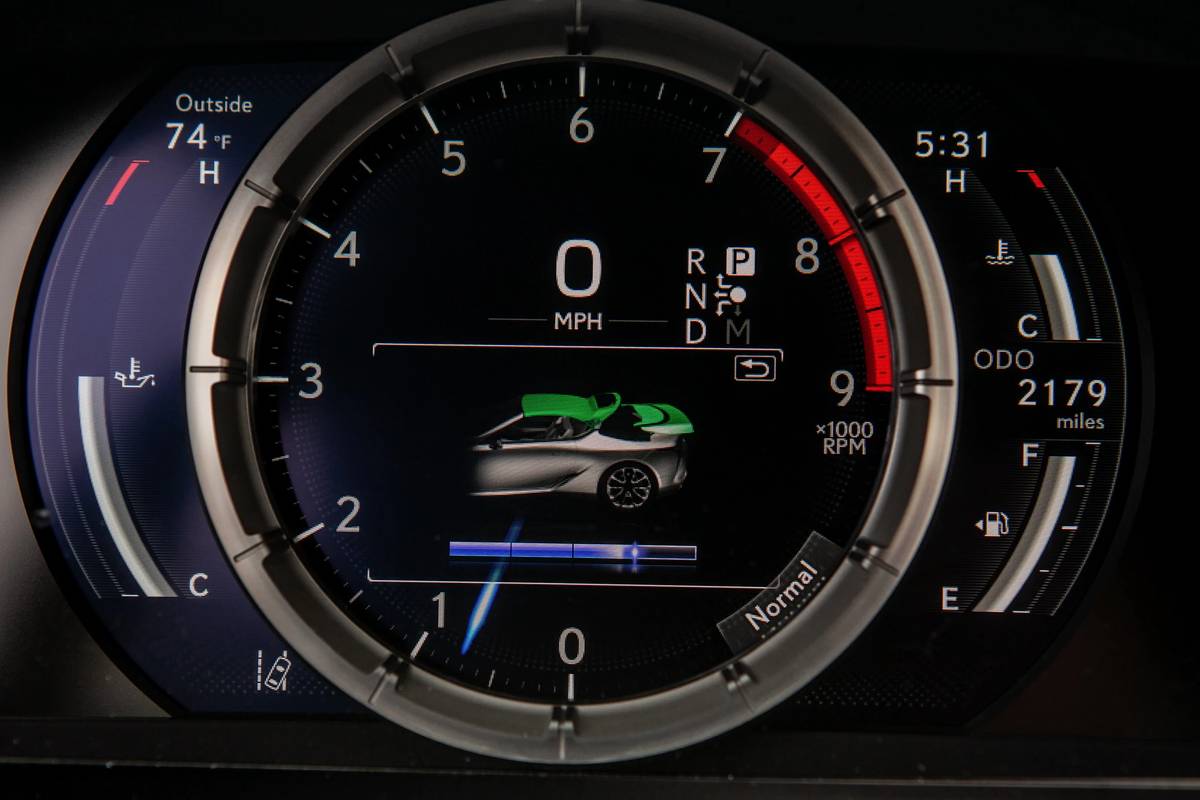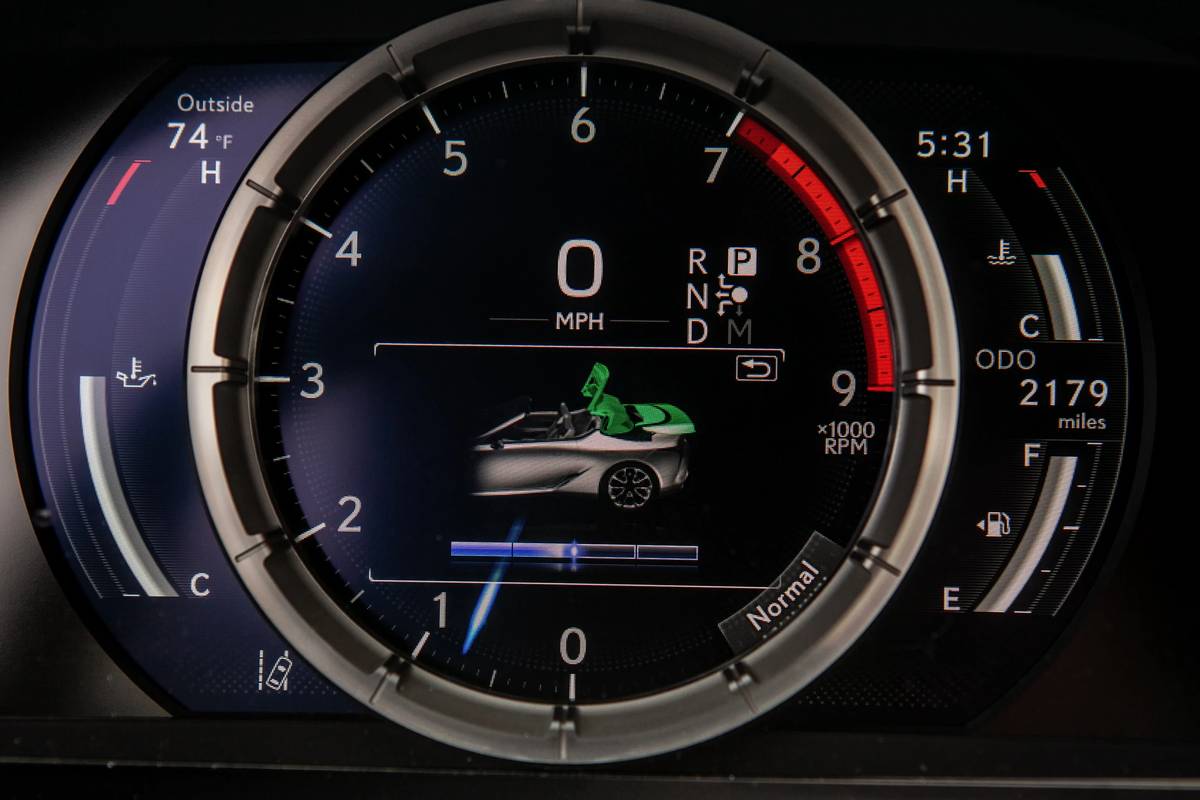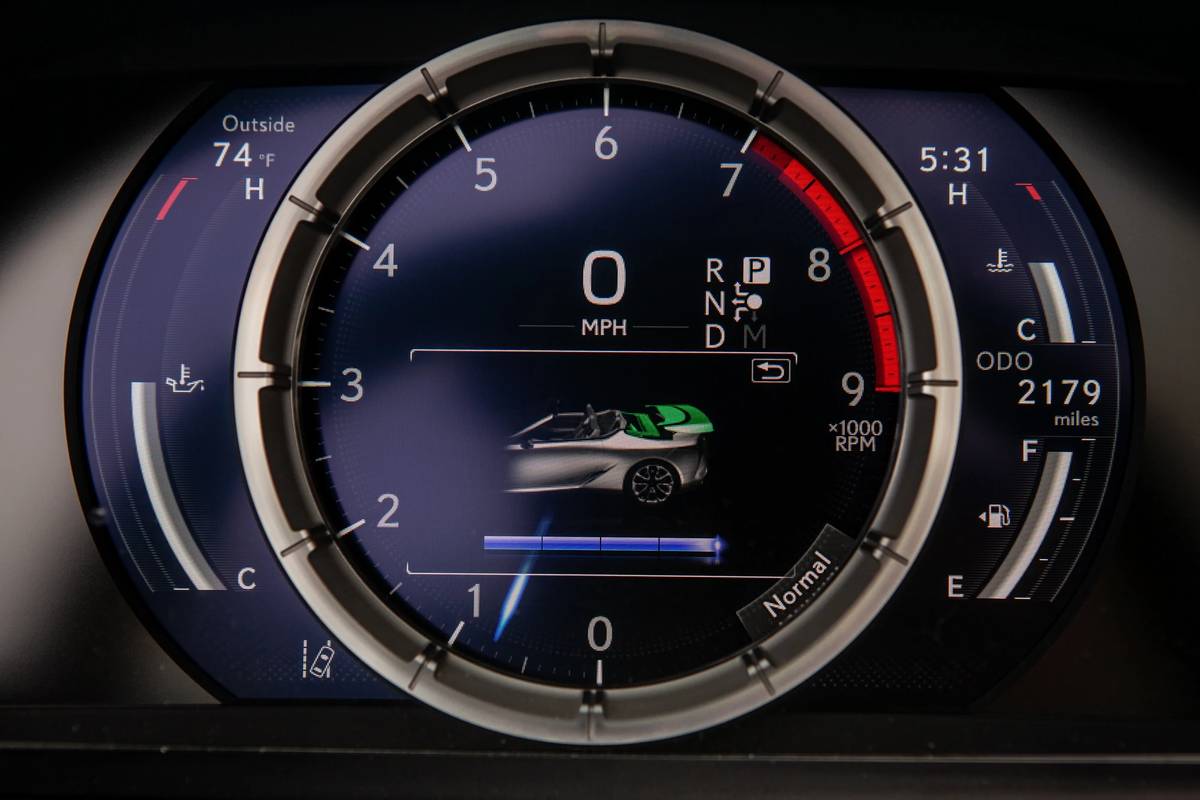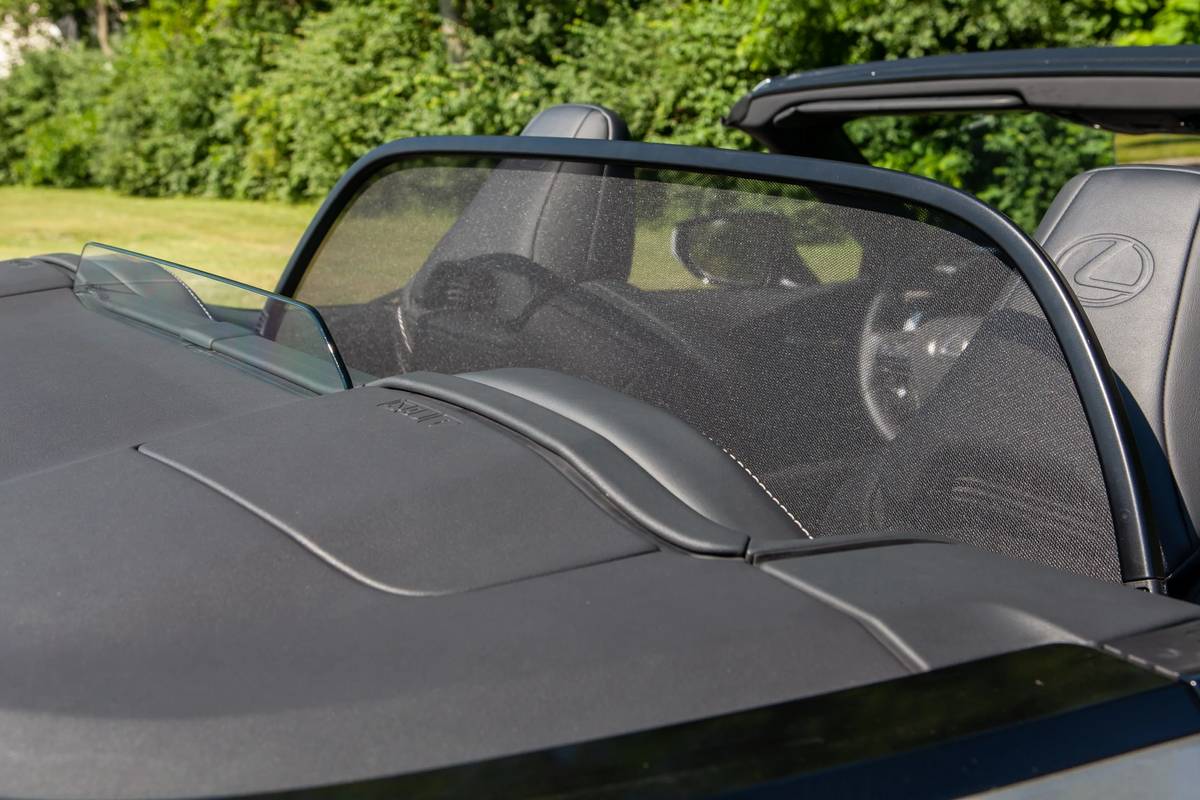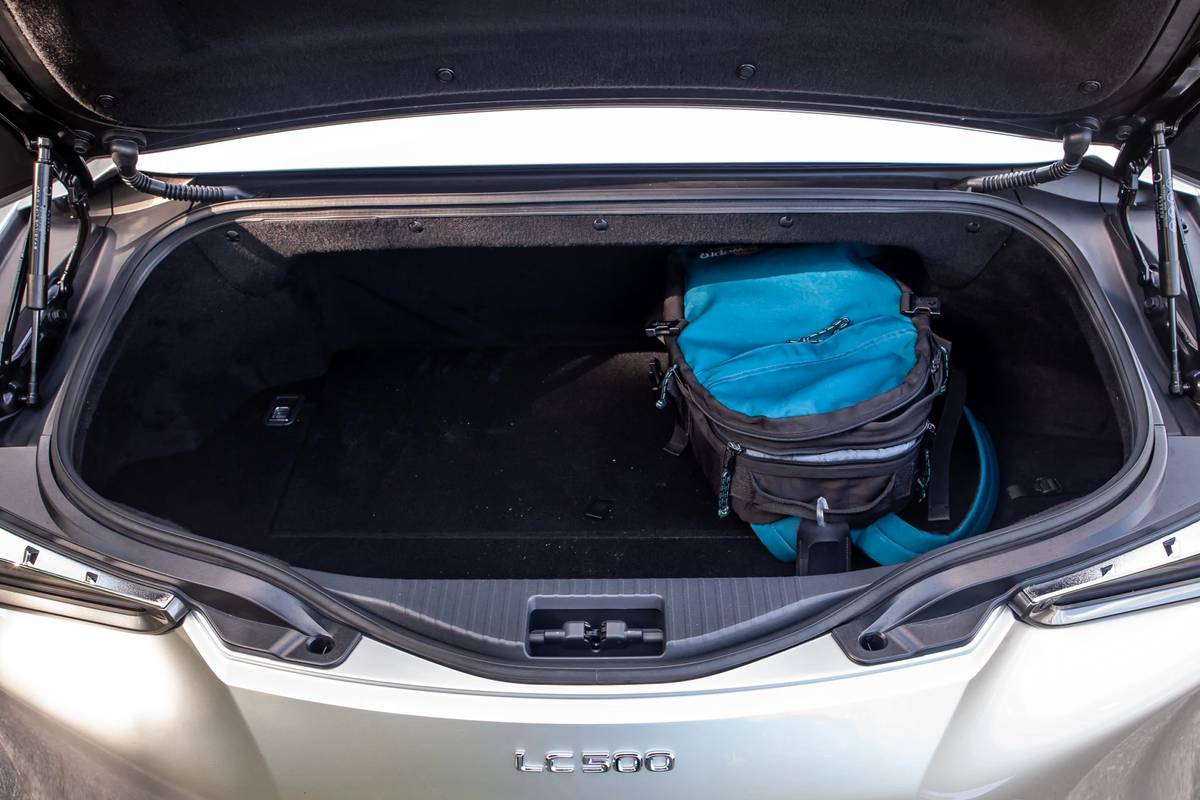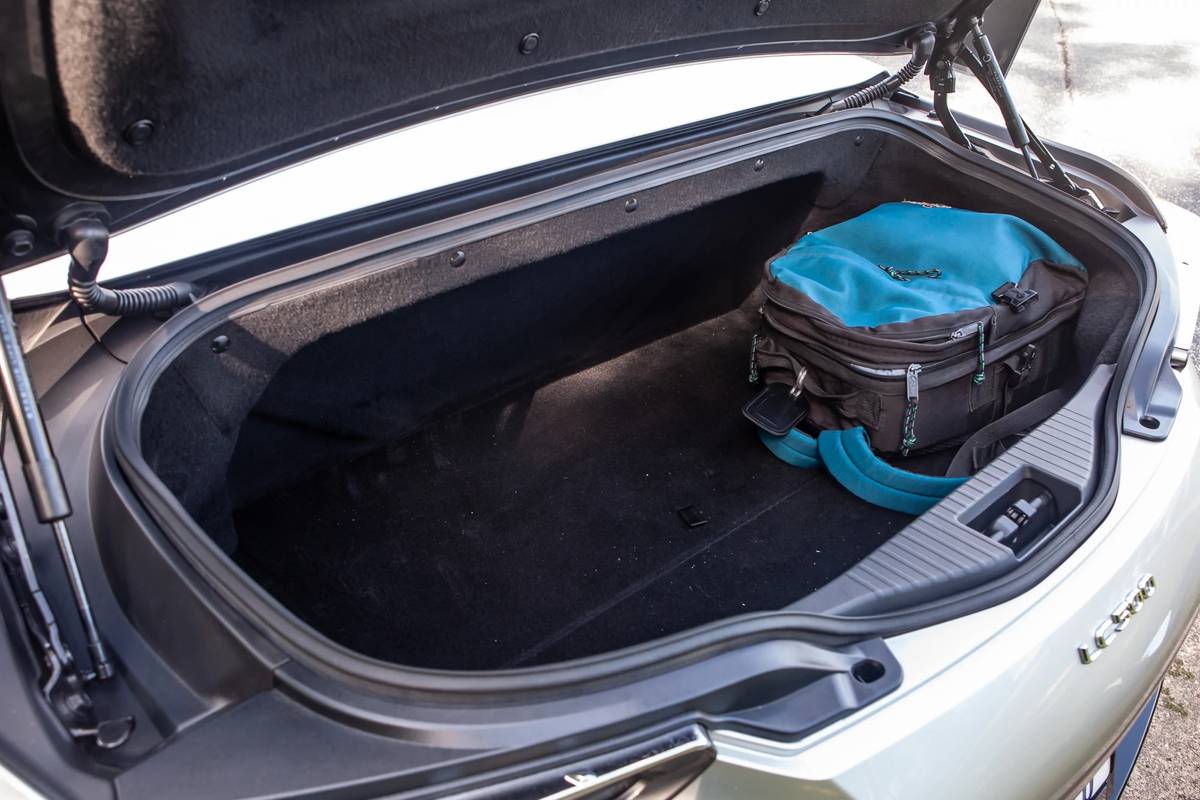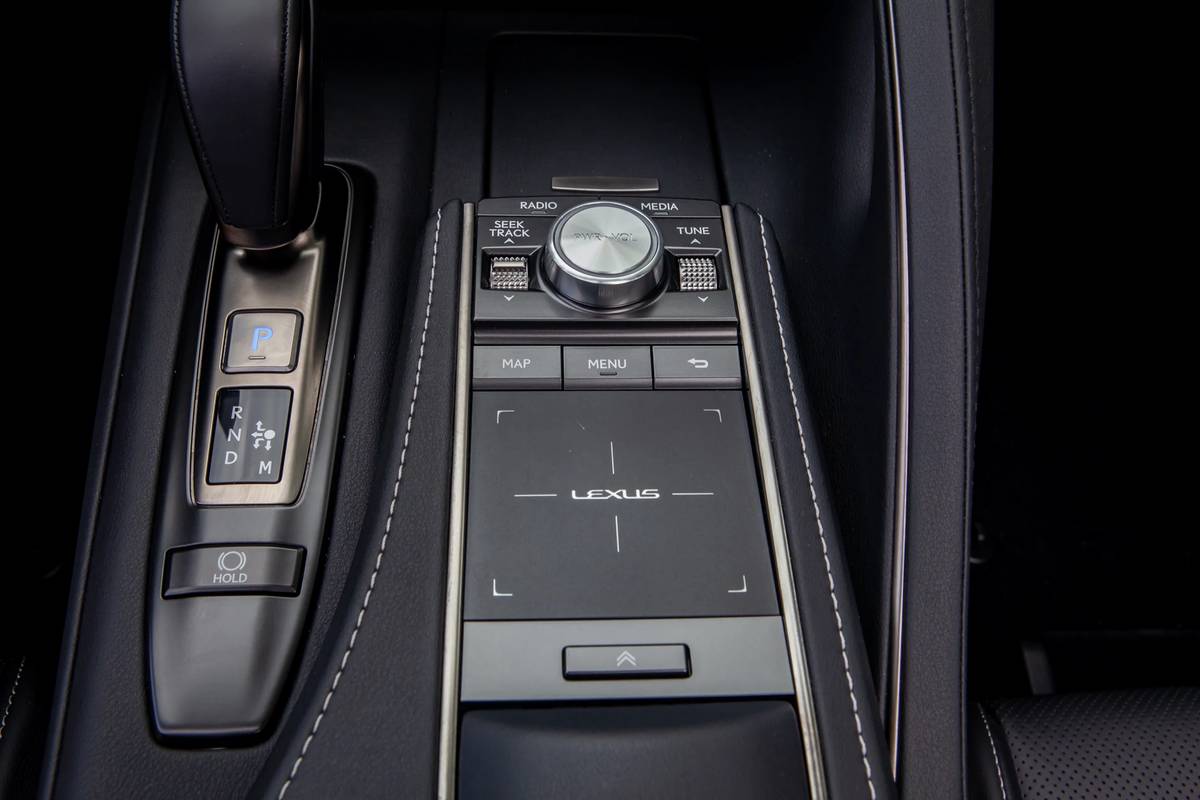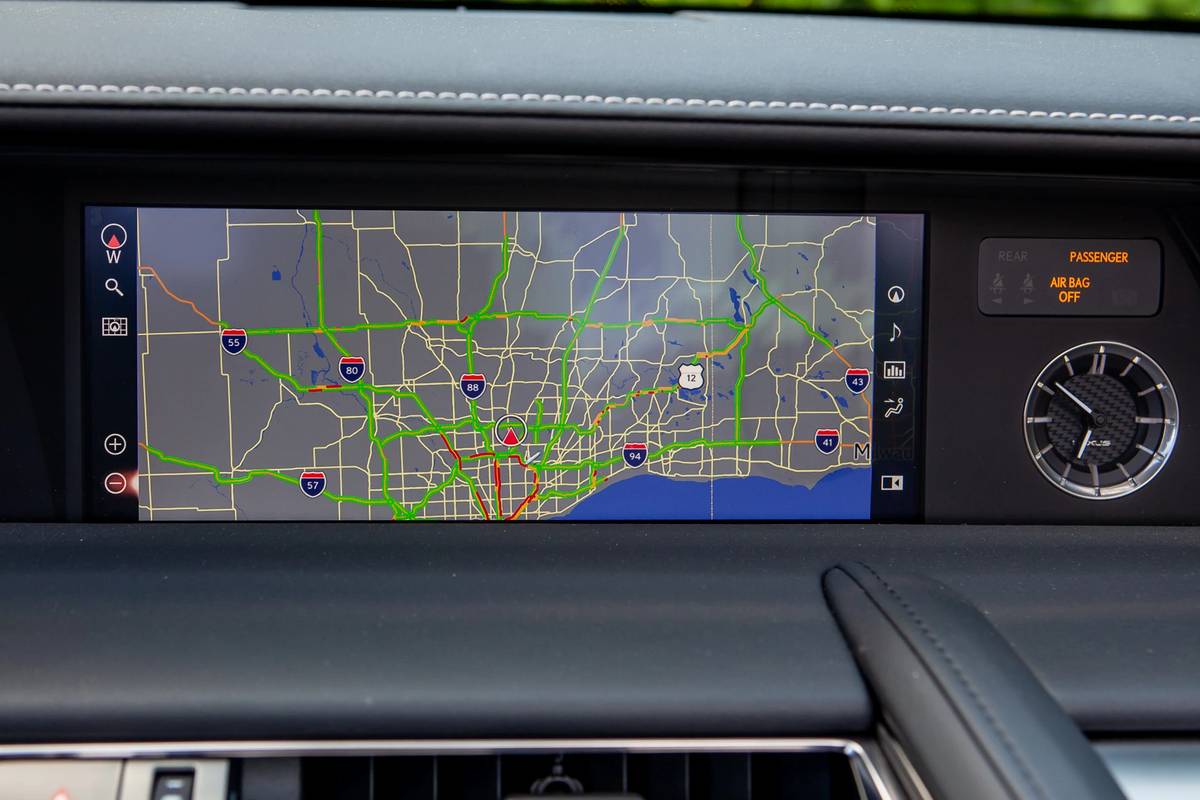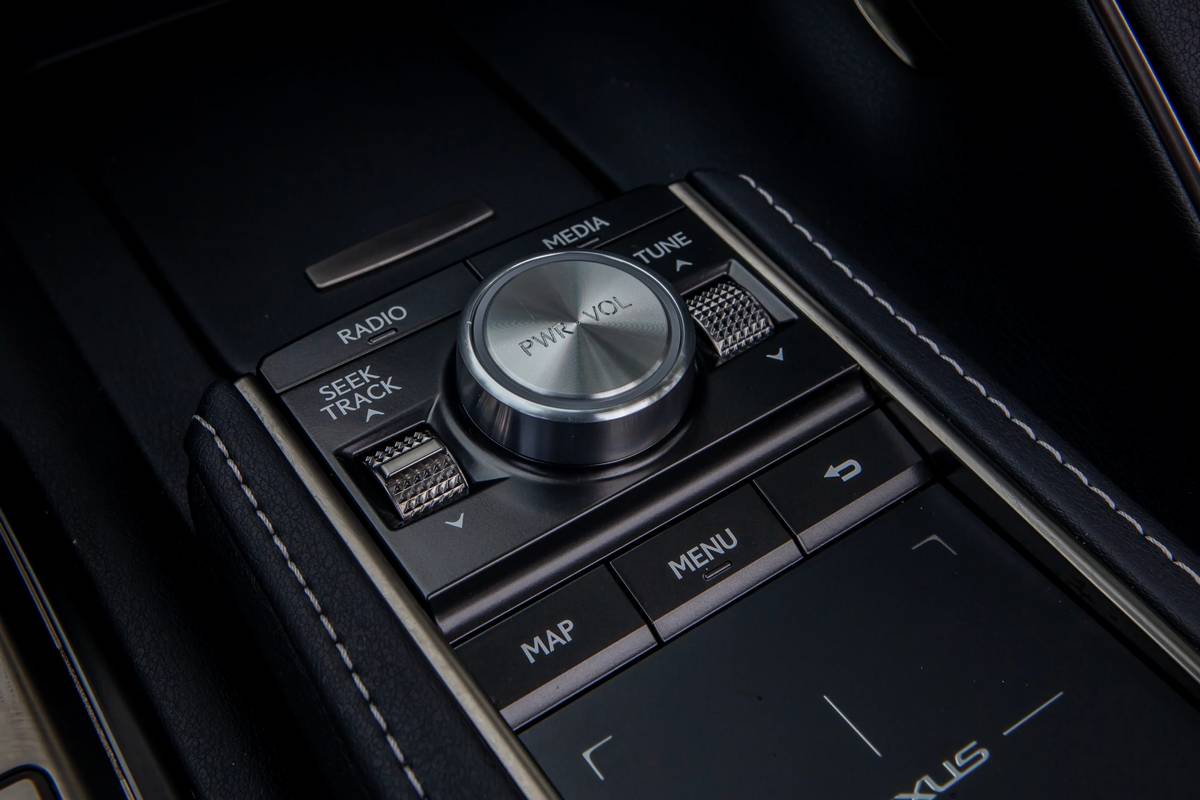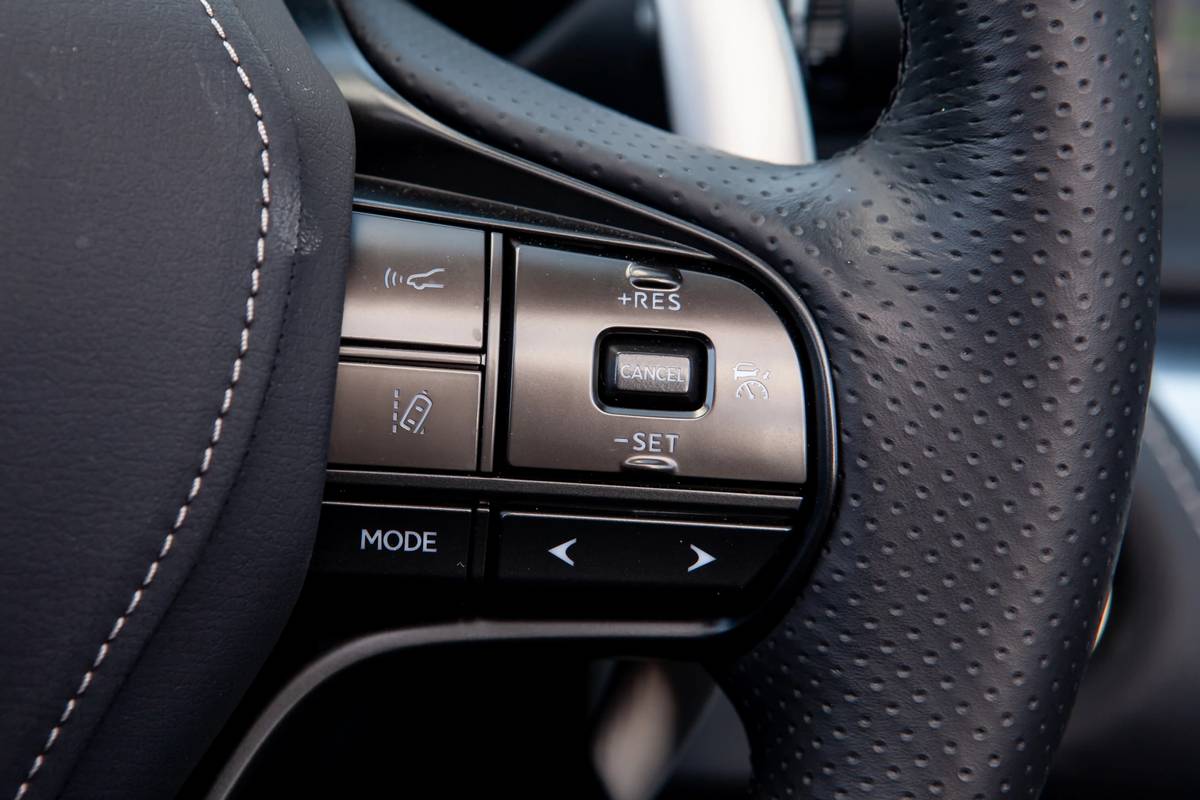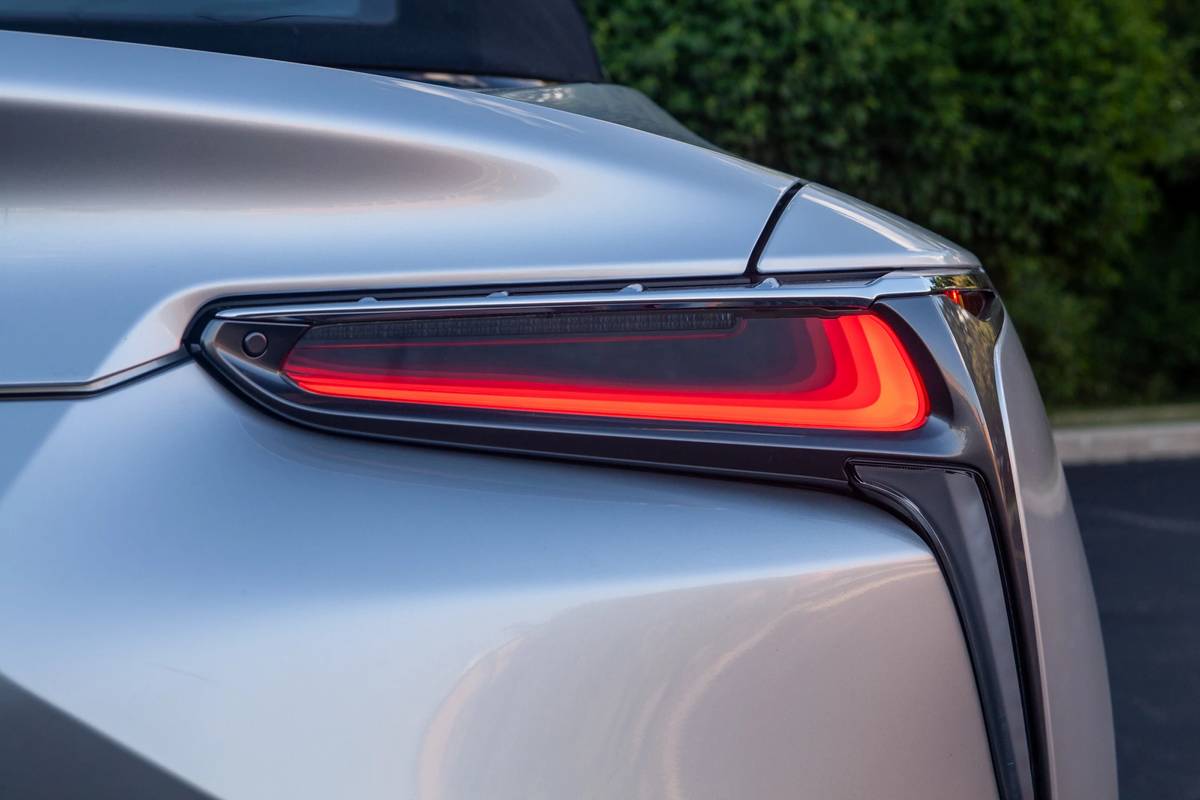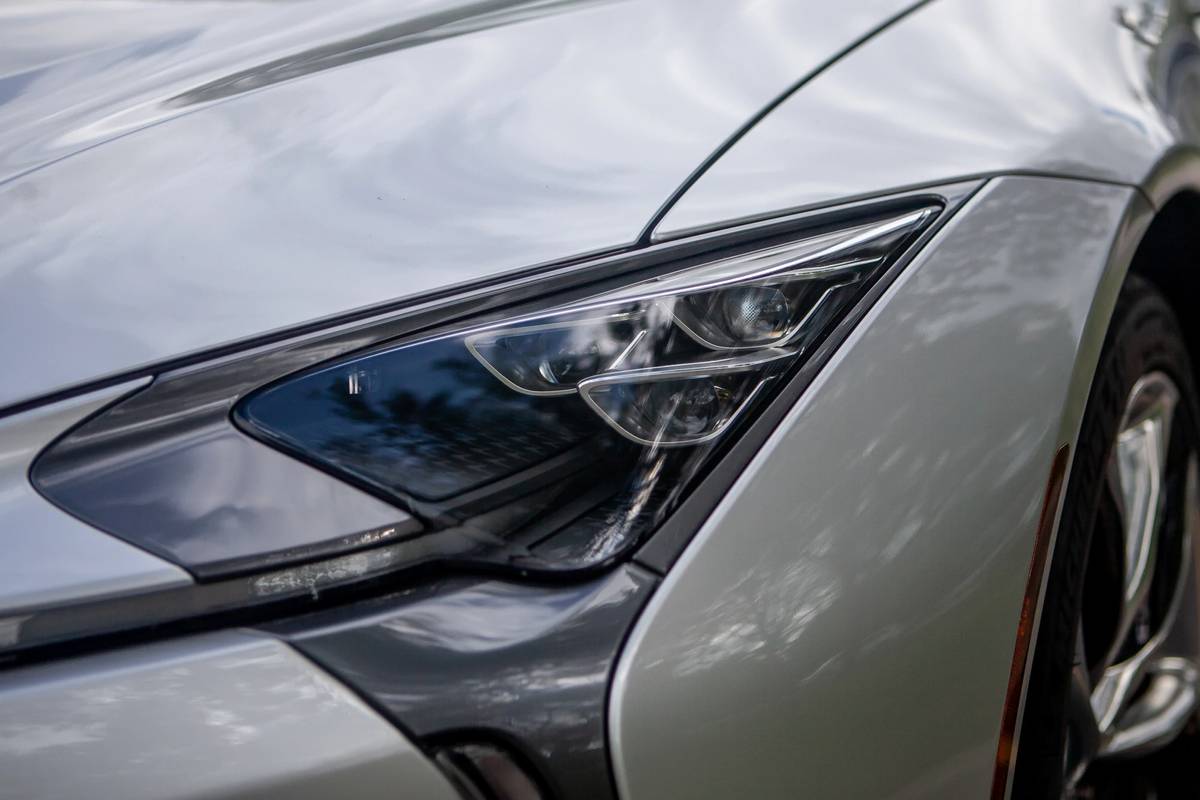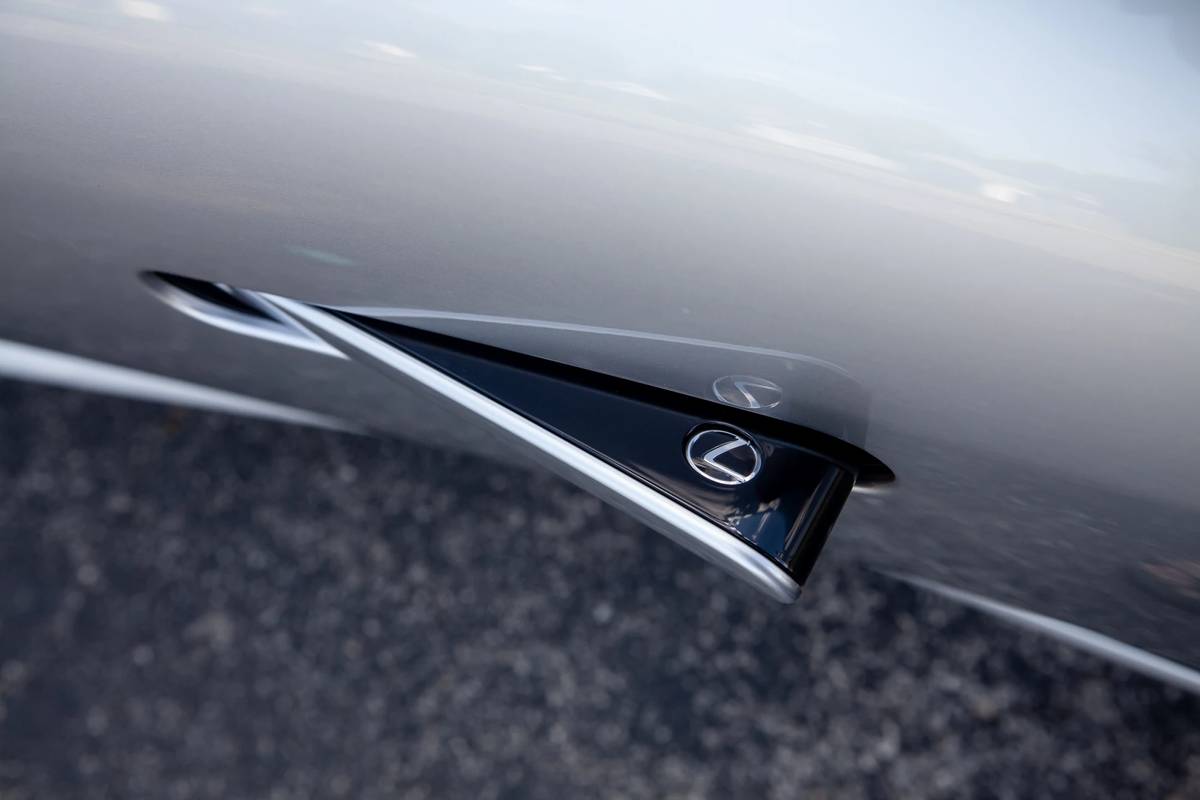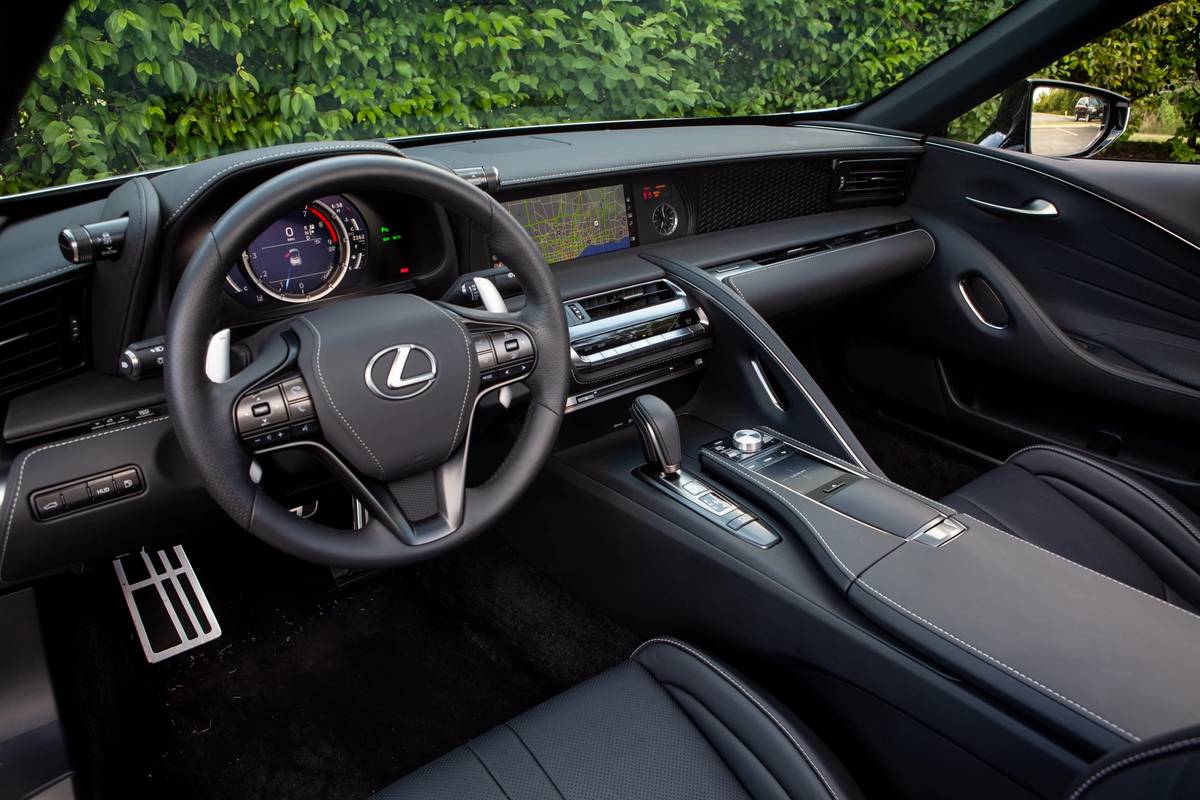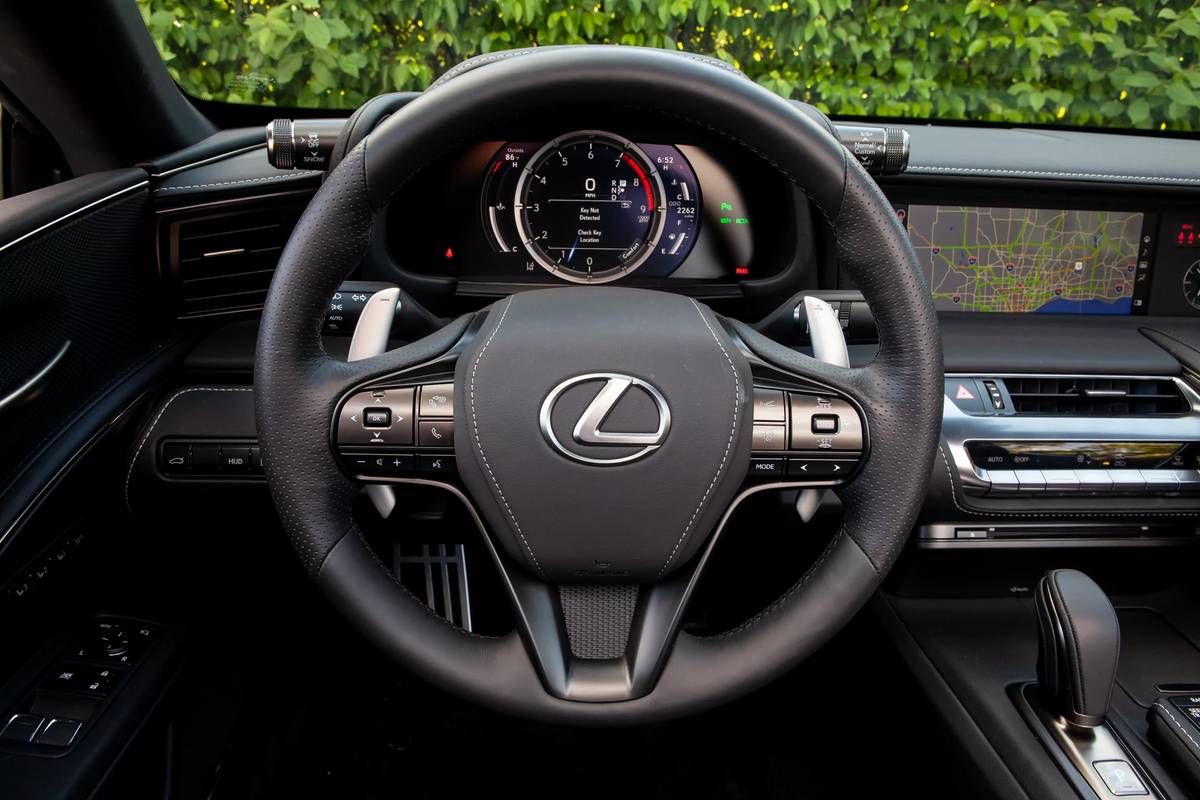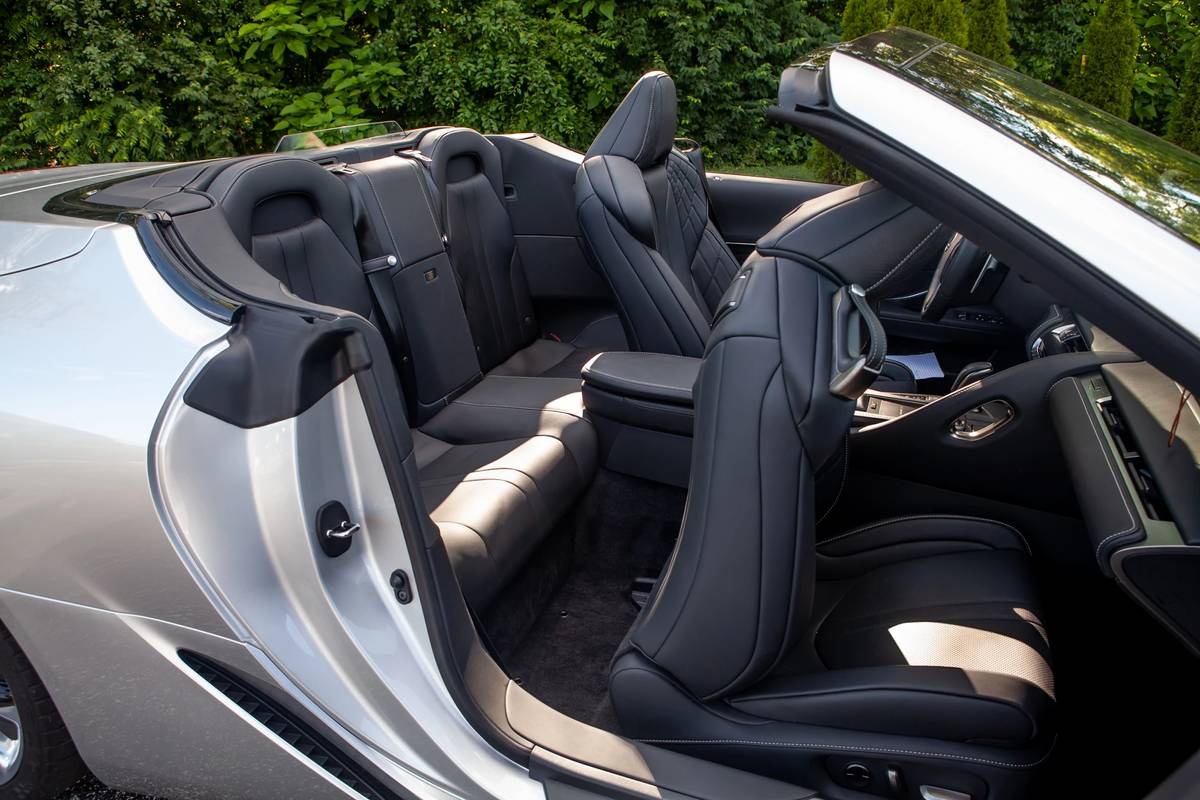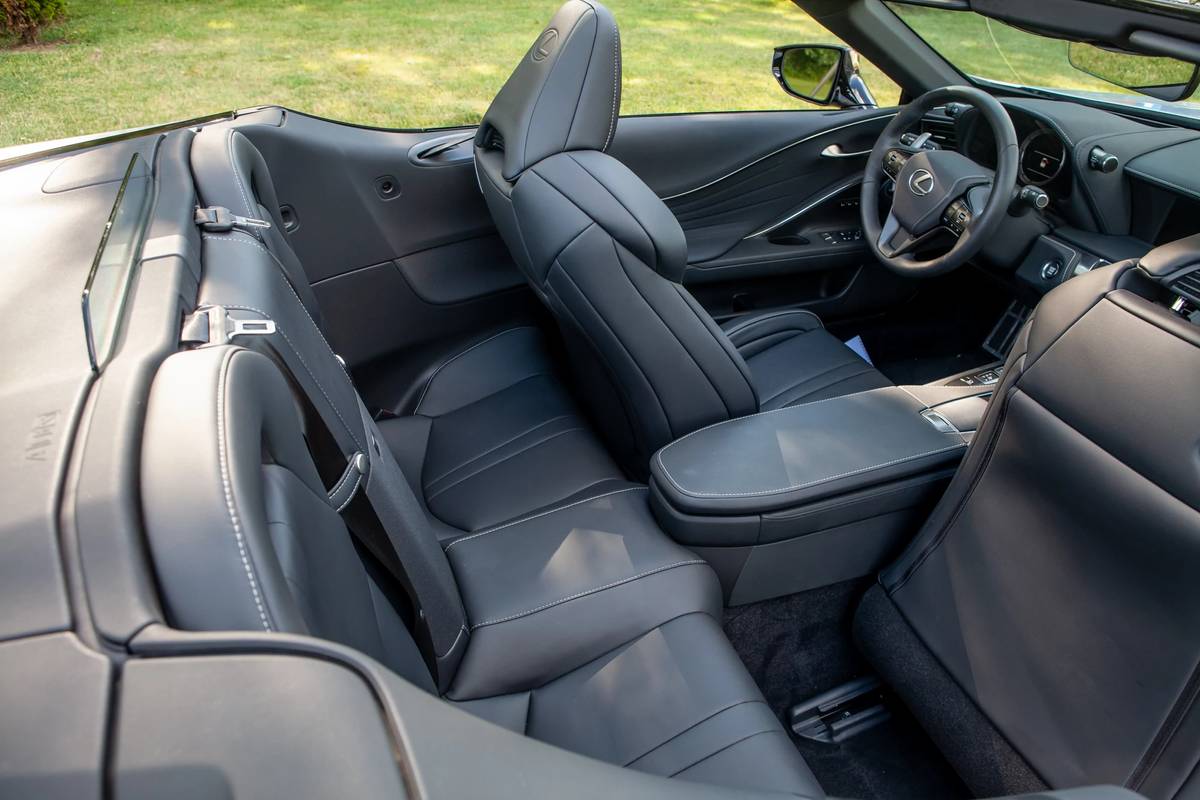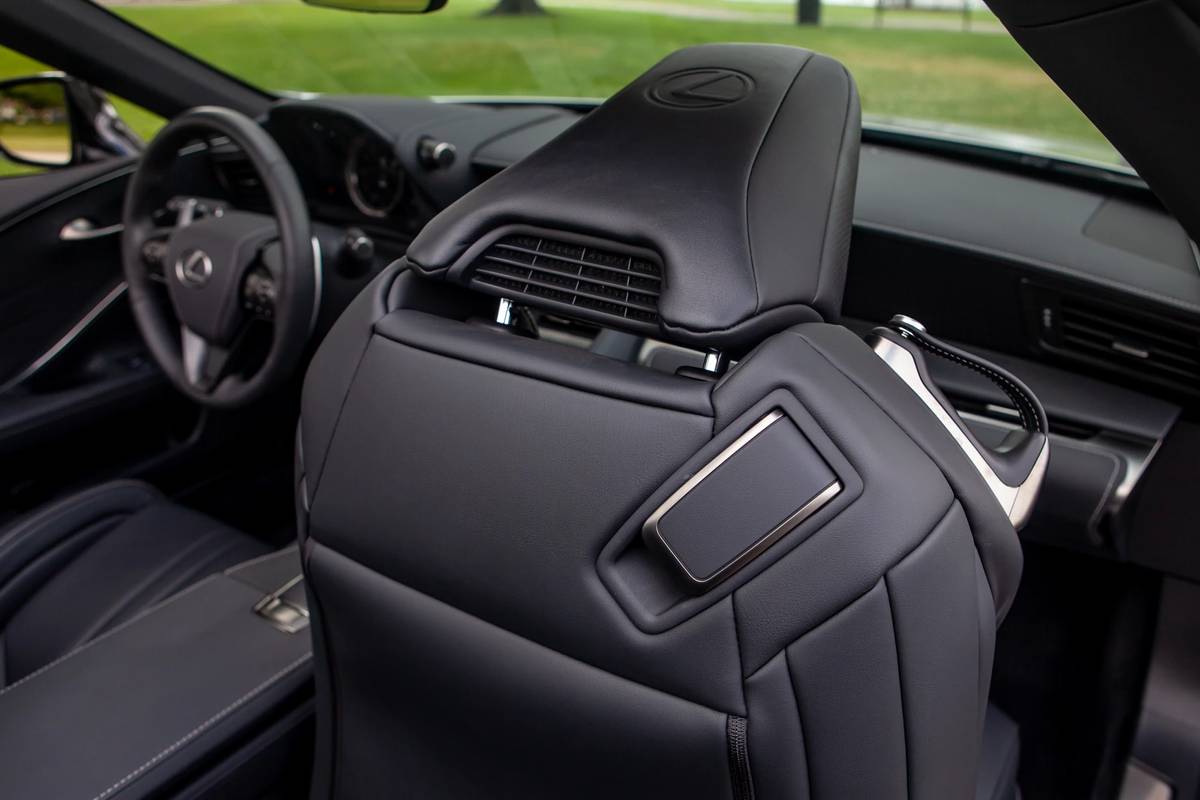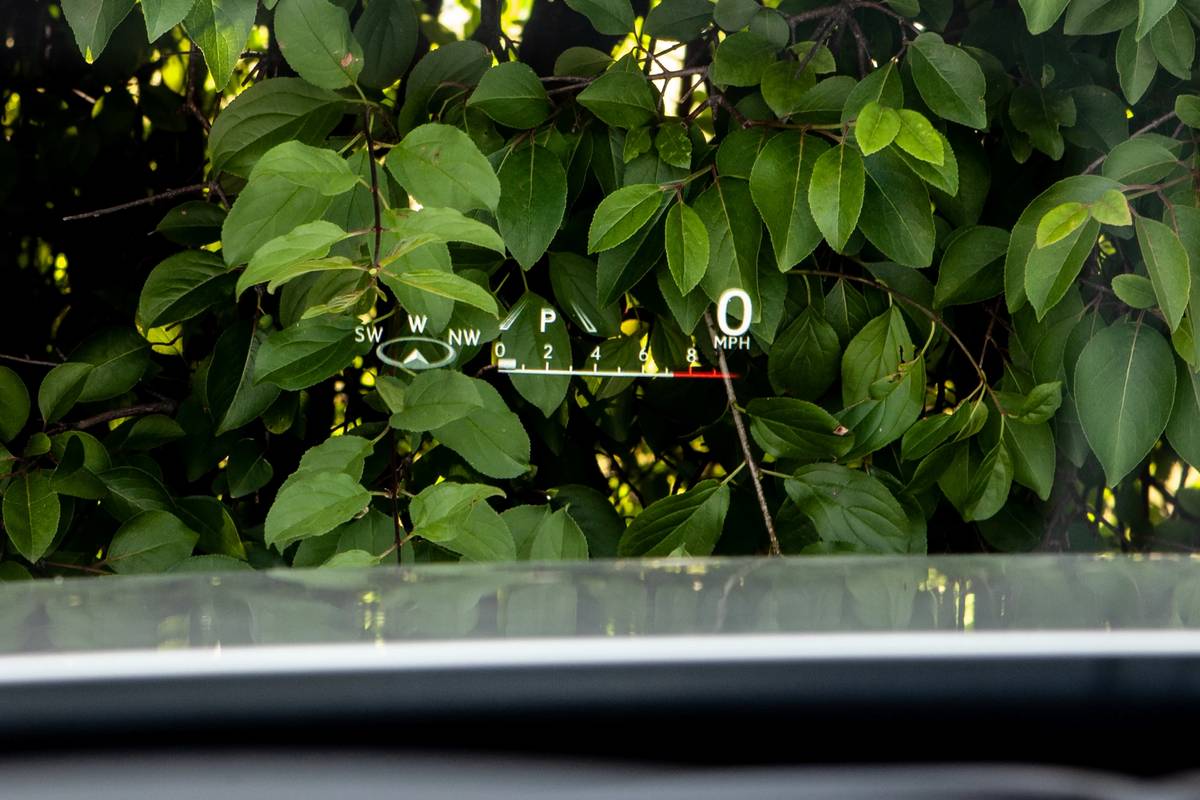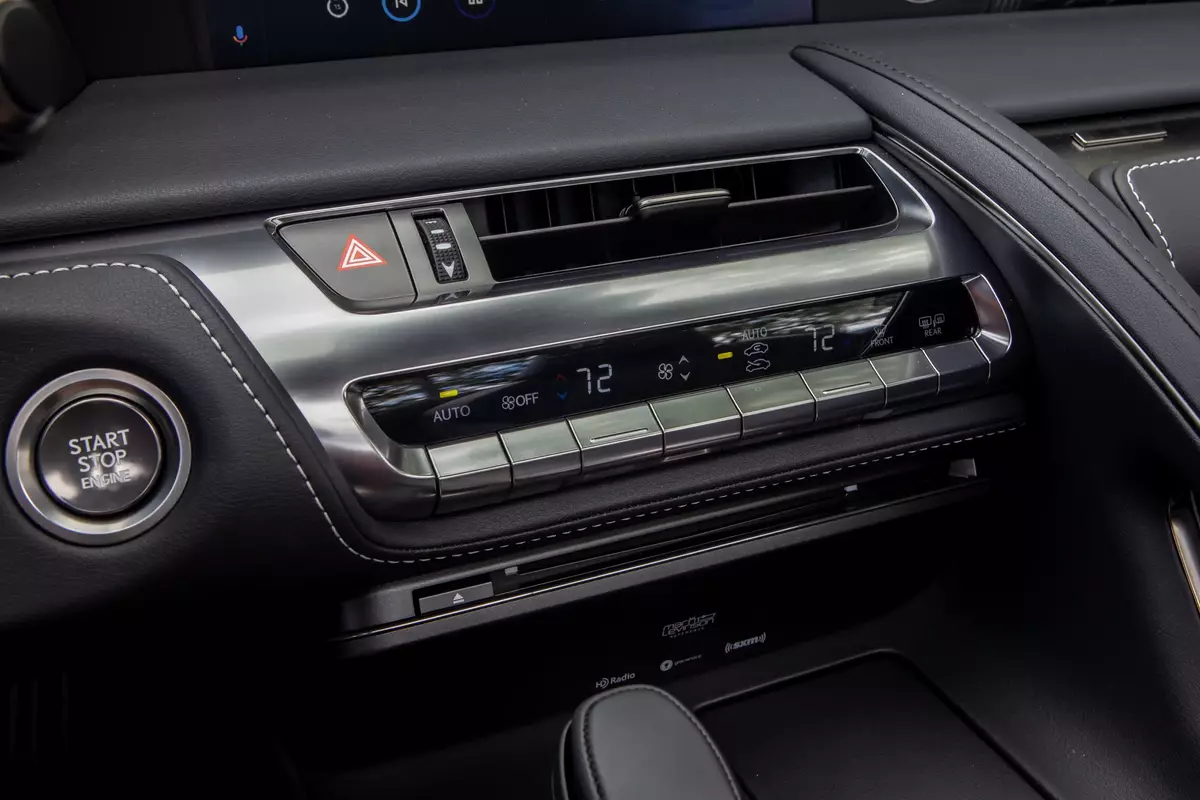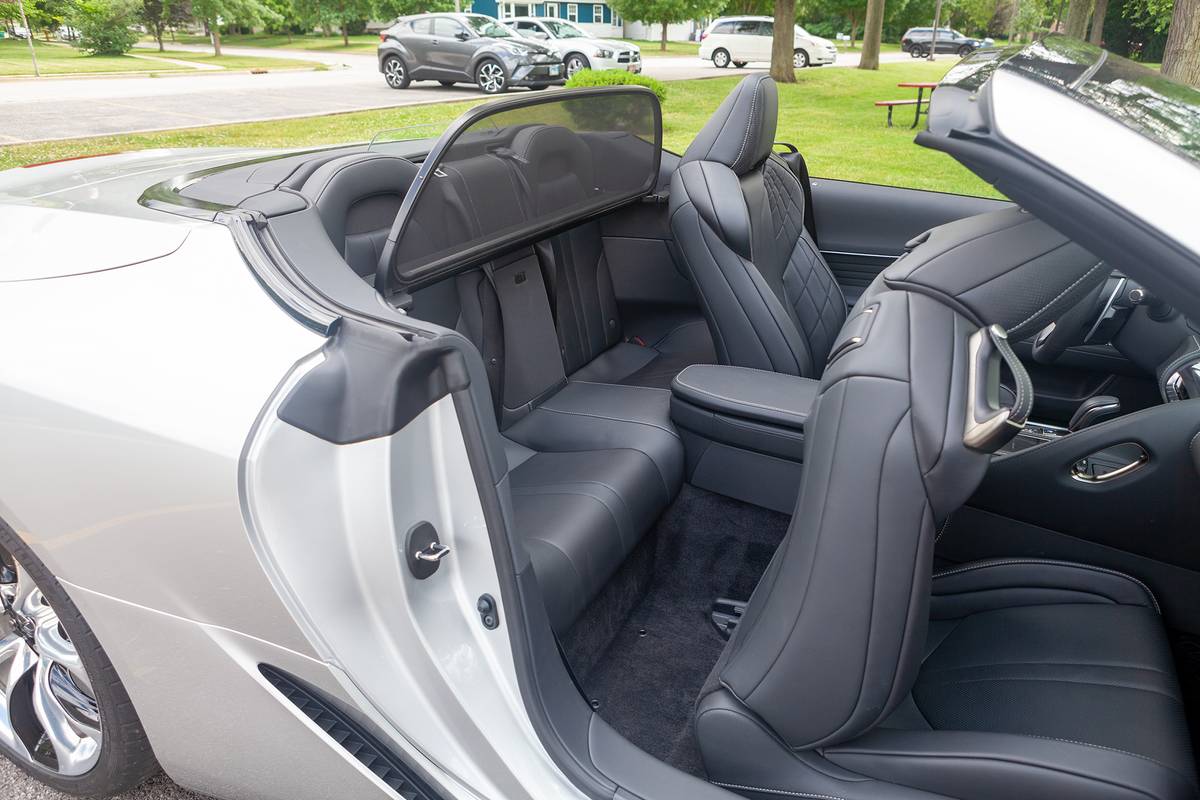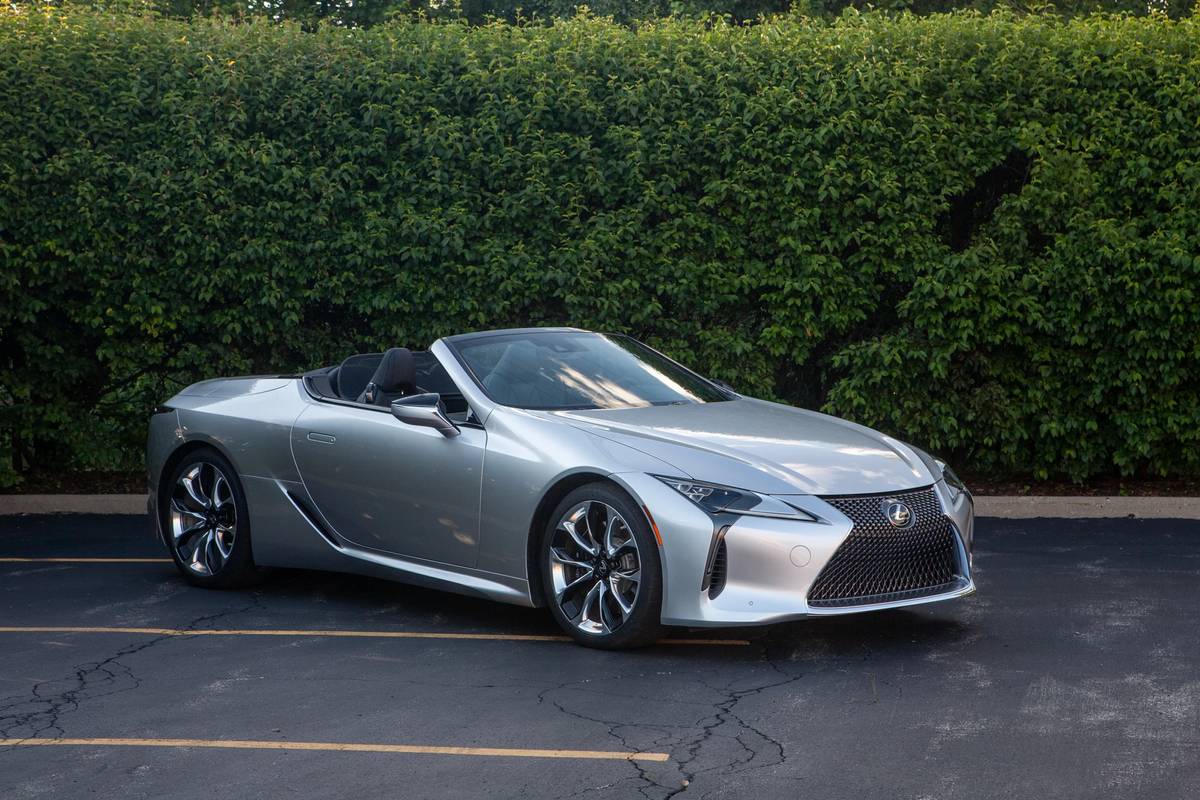
The verdict: The convertible version of Lexus’ 2021 LC 500 does an admirable job of avoiding the common pitfalls of coupes-turned-droptops, but it also loses some of the original’s star quality.
Versus the competition: Where many competitors have more of an emphasis on performance, the convertible more naturally suits the LC 500’s casual, grand-touring feel. A non-turbo V-8 pays off with throttle response, but owners will pay more at the pump.
The Lexus LC 500 coupe has been an unlikely favorite of ours since its debut as a 2019 model. I say unlikely because we aren’t fans of the touchpad that controls important functions in many of Lexus’ vehicles, and because at $93,975 (with destination charge) for the 2021 coupe, it’s rather expensive. It may look like a supercar that would be priced even higher, but it performs like a grand tourer.
So what made the LC coupe a favorite? It’s a gorgeous, distinctive car, and for many buyers that’s more than half the battle (or all of it). It also has a quality interior and is very comfortable — for two. The backseat is barely usable, but that’s not uncommon for this car type. Arguable competitors that already came in both coupe and convertible form include the Jaguar F-Type and Mercedes-AMG C63. Both have lower starting prices but broader lineups. A more expensive competitor is the BMW M850i xDrive, also available in both body styles (see all four coupes compared). A more affordable two-seater with performance credentials is the new Chevrolet Corvette, which is currently a coupe, but a convertible is on the way.
Related: Lexus LC 500 Keeps Fresh for 2021 With New Colors, Driving Dynamics, Android Auto
So, how similar is the new soft-top convertible LC 500 to the coupe?
It’s common to find that convertible versions of hard-top cars have robbed Peter to pay Paul — or perhaps I should say to pay Sol, where Sol is the sun. In this analogy, Peter can be any number of characteristics, but traditionally it starts with structural rigidity because a solid roof plays an important role in stiffening a car, specifically preventing longitudinal twist; losing that rigidity allows vibrations and noticeable shudder that can lead to squeaks, rattles and premature aging. Car design and manufacturing has improved over the decades, but convertibles in particular have aged poorly compared with coupes and sedans.
Even when new, droptop versions of coupes often exhibit compromised handling for the same reason: Suspension design is all about geometry, and geometry demands consistency. There’s nothing consistent about a platform that’s as rigid as cooked linguine.
Automakers have gotten much better about this kind of thing, and thankfully, so has Lexus with the convertible LC 500. Though there was no guarantee a convertible would get the green light, engineers designed the coupe to account for the eventuality. Look under the hood and you’ll see the same braces as the coupe, tying each strut tower to both the cowl and the front of the frame above the radiator. Unrelated but fascinating, you also see components near the front of the engine compartment already used in the coupe: two of the pyrotechnic cylinders that pop up the hood for pedestrian protection in the event of a collision, providing several inches of crush space between the unlucky ped and the engine block. They look like spring-loaded asthma inhalers.
Back to structure: You can also see a cast-aluminum brace spanning the rear shock towers — if you stop the top operation halfway through to take a look. What you can’t see includes additional gusseting at the base of the A- and B-pillars and a new torsion box in the rear.
Behind the Wheel
To me, the car feels much like the original, though a direct comparison isn’t possible yet because Lexus changed the suspension of the 2021 hardtop, which I haven’t driven, promising “enhanced connection to the road and overall feel for the driver,” according to press materials. This says “firmer ride” to me, fool’s gold Lexus has been chasing for most of its existence, ignoring the success of the cushy original LS 400. In my opinion, most roads are best left unfelt, and the LC 500 Convertible fortunately still seems to lean in that direction even when fitted with optional 21-inch forged-alloy wheels rather than the standard cast-alloy 20s.
Speaking of leaning, it doesn’t do much of that; body roll is minimal. An adaptive suspension is standard, but to be honest, there’s so little difference in the ride quality when you switch among Comfort, Normal, Sport and Sport Plus modes that I incorrectly thought Lexus had decided to make the adaptive variable suspension optional on the convertible, leaving these modes to vary only the powertrain behavior. Many automakers have wisely begun to program their adaptive suspensions to keep their vehicle’s ride softer when traveling straight — even in sport modes — but to firm up in turns. If that’s what Lexus has done, it’s taken it to a new extreme.
As in the coupe, the dynamics are pretty good but far from the level of a Corvette or even the F-Type. Roadholding is mostly good, though the tail is a bit squirrelly if you get on the gas, a trademark of Lexus’ rear-wheel-drive performance cars. Prudent accelerator use and the electronic stability system keep things safe and in line.
The powertrain remains a high point thanks to a 5.0-liter V-8 engine rated at 471 horsepower and 398 pounds-feet of torque, the same as the coupe. There’s no turbocharger, which is increasingly rare even among V-8s and is exclusive among the competitors mentioned above apart from the Vette. As a result, the throttle response is immediate and the sound is fulfilling and natural because there’s no turbo blocking the exhaust. There’s even a pipe that brings induction sound from the intake manifold into the cabin, sealed off by a diaphragm — what’s called a passive radiator in loudspeaker terms. The LC also uses the audio system’s actual speakers to augment the sound, though the degree isn’t as great as what’s required in many turbocharged cars (including some Lexuses) nowadays. Standard active sport exhaust also lets the organic sounds loose in sport modes and at high revs by opening bypass valves in the mufflers.
The 10-speed automatic transmission suits the car well. Though automatics with high gear counts tend to hunt and introduce lag, this one isn’t bad for the purpose at hand, which is not at-the-limits track driving. It does a good job of reading the needs in normal or spirited driving. If you choose to shift for yourself using the steering-wheel paddles, you’ll find that the reaction time is reasonably fast but that the transmission stair-steps through gears rather than jumping like the best automatics, including the Corvette’s.
Having 10 gears helps keep the EPA-estimated gas mileage semi-reasonable at 15/25/18 mpg city/highway/combined, which is 1 mpg combined lower than the coupe. Not surprisingly, the turbo competitors all rate at least a couple of mpg higher in their most efficient form, even though one comes with all-wheel drive rather than the LC’s rear-wheel drive. The naturally aspirated 2020 Corvette coupe rates slightly better at 15/27/19 mpg (the convertible wasn’t rated as of publication). All of these cars require premium gasoline.
At 4,540 pounds, the convertible weighs 200 pounds more than the coupe, which explains the mileage difference as well as a slight increase in the 0-60-mph time from 4.4 to 4.6 seconds.
For stopping power, the LC has impressive-looking six-piston front and four-piston rear brake calipers. I found the brakes strong but grabby, a common characteristic of by-wire brakes that use electric rather than vacuum assist.
The Top
Lexus was an early purveyor of retractable hardtop convertibles, but the company went with a simple powered soft top in the LC — and for that, we should all be grateful. The coordinated ballet of a retractable hardtop opening or closing had a great gee-whiz factor for a while, but the roof design proved to have plenty of shortcomings in most applications we’ve seen: Typically, they’re heavy, they take up a lot of trunk space, they’re relatively slow and often they require the car to be stationary to operate. Some models have needed clearance behind the car or the trunk lid would tilt back and bash into something. And perhaps worst, despite the best efforts of designers, they’ve often looked awkward. The retractable hardtop is starting to look like a passing fad, though there are exceptions that strive to avoid all of the pitfalls above, including the coming Corvette convertible.
Lexus says the main reasons it avoided the retractable hardtop approach were to give the convertible a different profile than the coupe and to keep the car’s center of gravity low. In contrast to what we’ve seen from so many retractable hardtops, the LC 500 Convertible’s soft top doesn’t intrude into the trunk at all when lowered, which it achieves in a scant 15 seconds and while traveling up to 31 mph. Raising it takes 16 seconds. It’s quick enough that you don’t need the animation that appears on the instrument panel display, but it’s pretty neat.
Driving with the top down is pretty comfortable. There’s some wind buffeting, but the standard wind screen you can install behind the front seats helps keep it at bay. Unfortunately the screen is rather large and hard to store, but given how nearly useless the backseat is, you might as well leave it in place all the time. You can easily tilt either front seat forward and place items underneath it on the rear seats, which is their primary purpose given that the trunk is only 3.4 cubic feet — 2 cubic feet smaller than the coupe’s and embarrassingly smaller than the competitors, according to their provided specs: 7.3 for the F-Type convertible, 8.8 for the C63 cabriolet and 12.4 cubic feet for the M850 convertible, though cargo specs don’t always tell the whole story.
Top-down visibility isn’t bad either. The screen is just that — a mesh material — and a small glass wind deflector on the rear deck is, of course, transparent.
With the top up, visibility isn’t as good. The cloth forms a relatively wide C-pillar, as soft tops typically do. But this might be the sole downside of Lexus’ choice of soft versus hard. One of the other arguments for retractable hardtops is noise control, but the convertible’s cloth top is thick enough that the cabin is quieter than many non-luxury sedans and coupes. If it gives you any indication, I spent a lot of time playing with settings, trying to figure out if the wonderful engine sounds I couldn’t hear anymore were tied to a drive mode I had switched off when I finally realized it was because the closed top and windows were insulating me from the exhaust sound.
About That Touchpad
Look, Lexus knows it has a problem with this touchpad system, called Remote Touch; otherwise, it wouldn’t have made the display in the 2020 RX 350 SUV a touchscreen. But the LC remains Remote Touch only. I tried to give it a fresh look, and I’m still not enamored. It’s hard to use while driving, particularly, and too many functions are buried a few levels deep. Move the pointer along the bottom row of menu icons, and some functions pop up to give you more direct access; I don’t know if this is a Band-Aid or the original design, but it’s not enough. Even more frustrating, the system incorporates many necessary functions, such as the climate controls. This is not merely a “multimedia” system that operates the stereo and navigation.
On the upside, the 10.3-inch display is nice, it supports both Apple CarPlay and Android Auto (the latter long awaited in Lexuses), and I was able to tune up and down the radio dial or preset list using switches above the pad and on the steering wheel; it’s remarkable how many steps some cars require to make this simple change.
Something’s Definitely Missing
The choice of a soft top was clearly the correct one, and the look is definitely not awkward, but I wouldn’t say the LC has survived its transformation from the coupe form unscathed. It’s a nice looking car with the top down, and it ain’t half-bad with it raised, either, but it doesn’t have the star quality of the coupe.
It’s a rich-looking car for sure, with intricate headlights and captivating taillights whose 3-D light bands move like a 1960s acid-trip film effects as you change your viewing position. All of this is good. But the coupe was a head-turner no matter where we drove it, even Los Angeles. The convertible got much less notice, top up or down. The coupe is rare enough where I live that this isn’t a case of the public becoming inured to a once new and captivating design. The loss of the coupe’s unique C-pillar fundamentally changes this car’s impact. Empirically, it’s less special. In this case, the only Peter I found is the car’s chief designer Tadao Mori. Mori was robbed to pay Sol.
I will always point out that the capability of a car to beat everyone else’s ass on a racetrack is oversold — and overtouted by people in my line of work. Criticizing a car like this one that does 0-60 in 4.6 seconds as a bad performer is preposterous on the grand scheme. There’s more than enough performance here for most buyers and most prudent driving scenarios. There’s also nothing wrong with comfort, and if this car can do what it does and be comfortable, too, I’m all for it.
All of that being said, Lexus’ vehicles are typically priced lower than BMWs and Mercedes-Benzes, and the main thing to us justifying the LC 500 coupe’s price tag was its look. Starting at $102,025 with destination, my LC convertible test car with optional equipment cost $111,325. Time will tell if the convertible, an empirically less special looking version, will justify its even higher price.
Cars.com’s Editorial department is your source for automotive news and reviews. In line with Cars.com’s long-standing ethics policy, editors and reviewers don’t accept gifts or free trips from automakers. The Editorial department is independent of Cars.com’s advertising, sales and sponsored content departments.



























